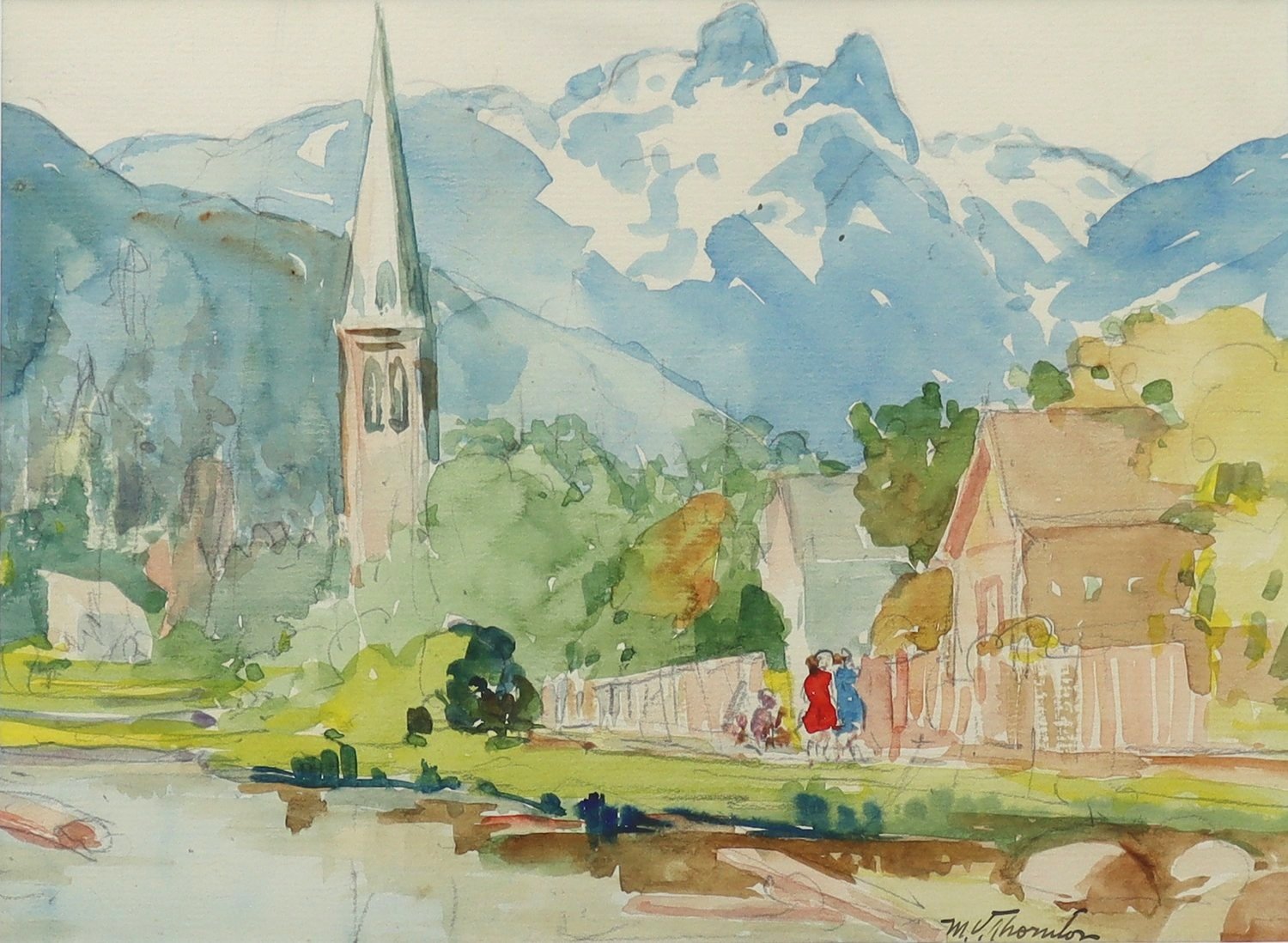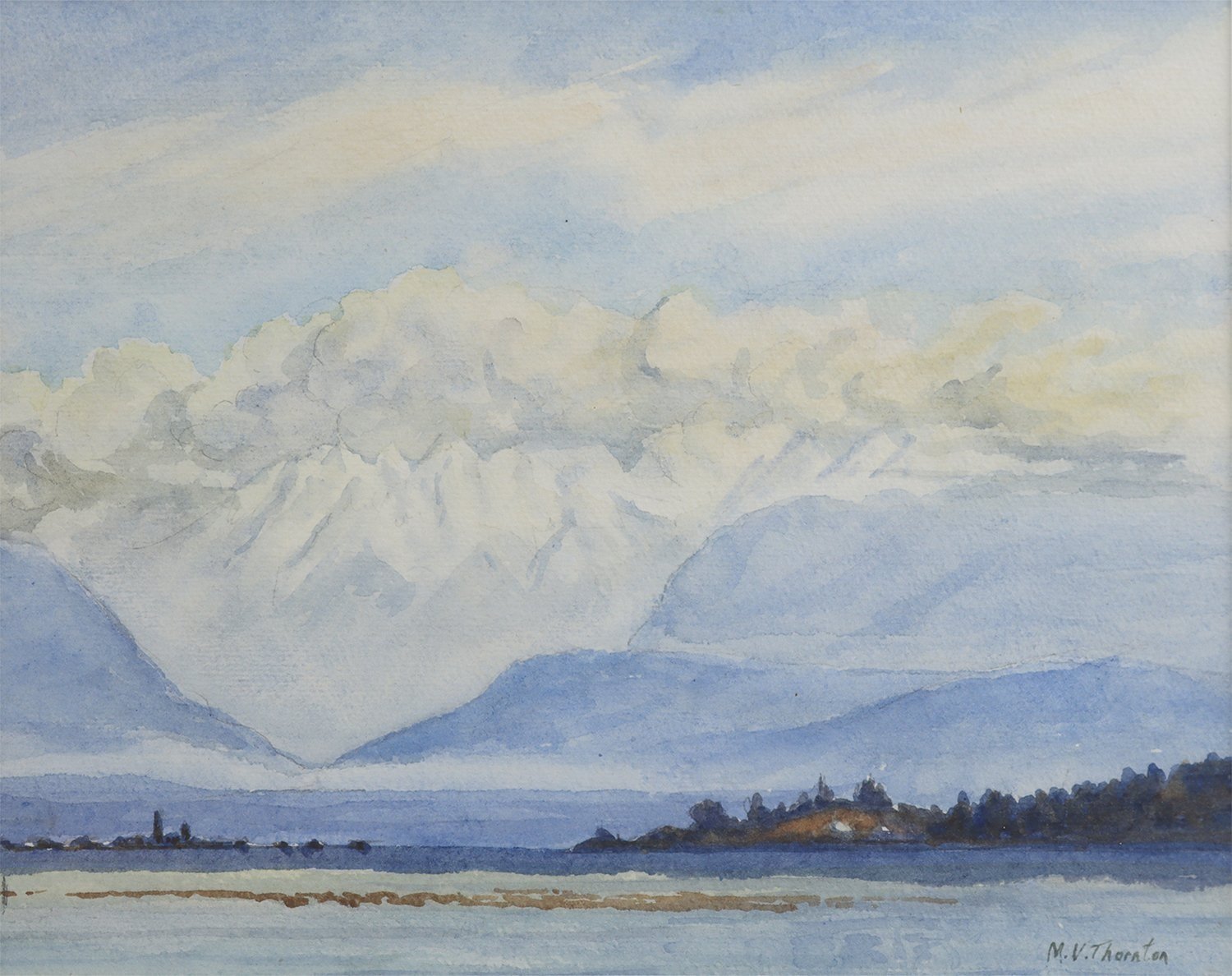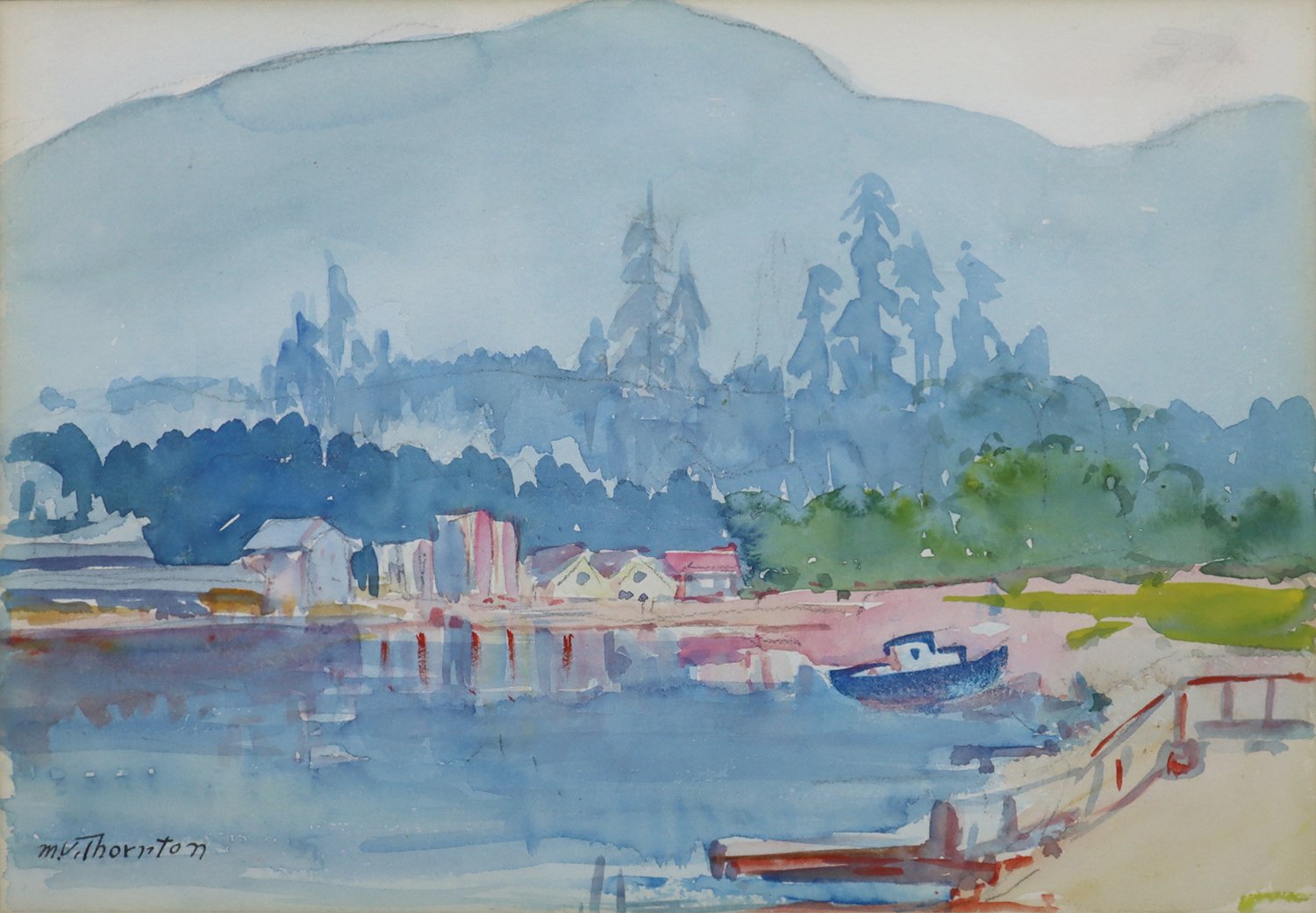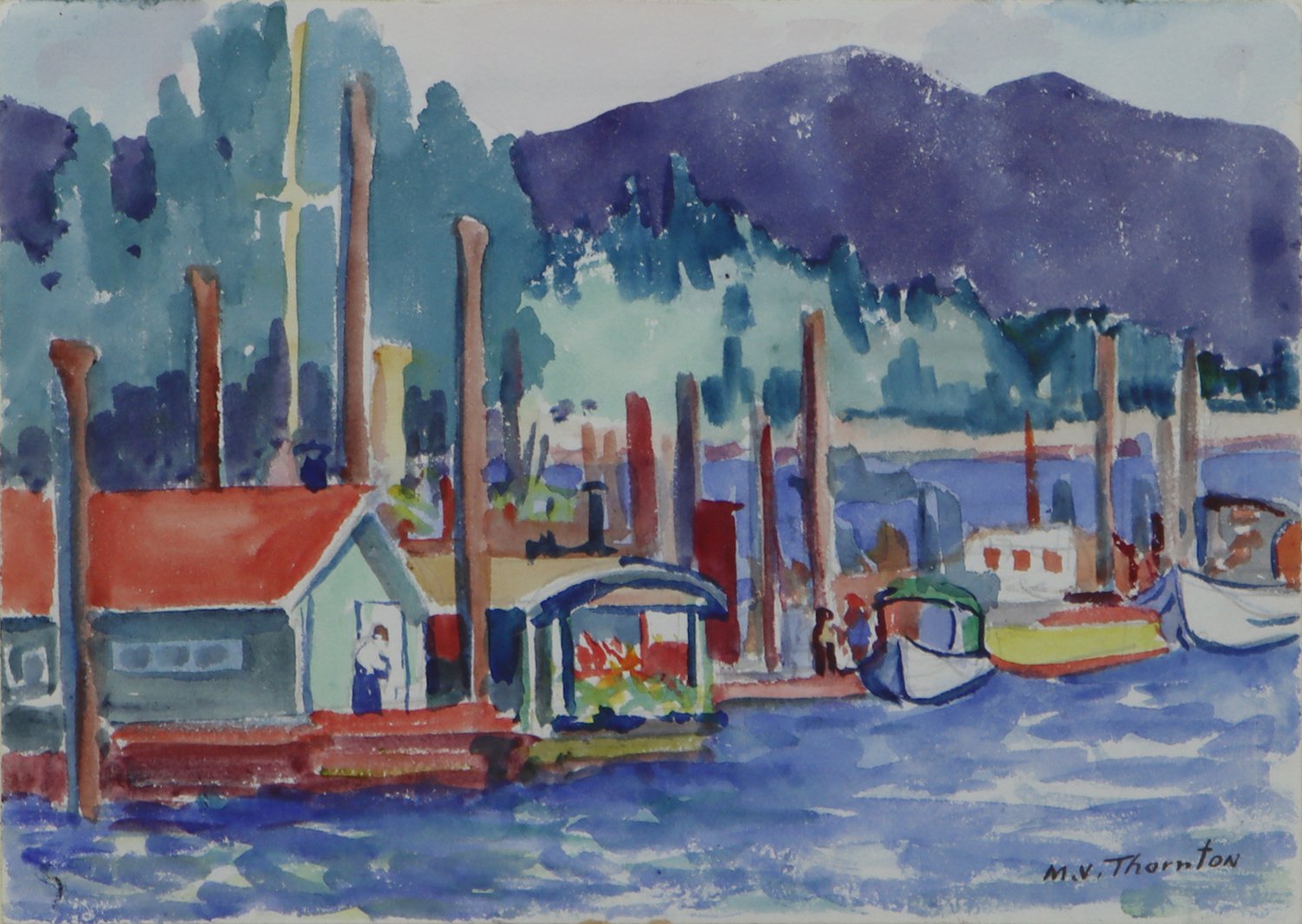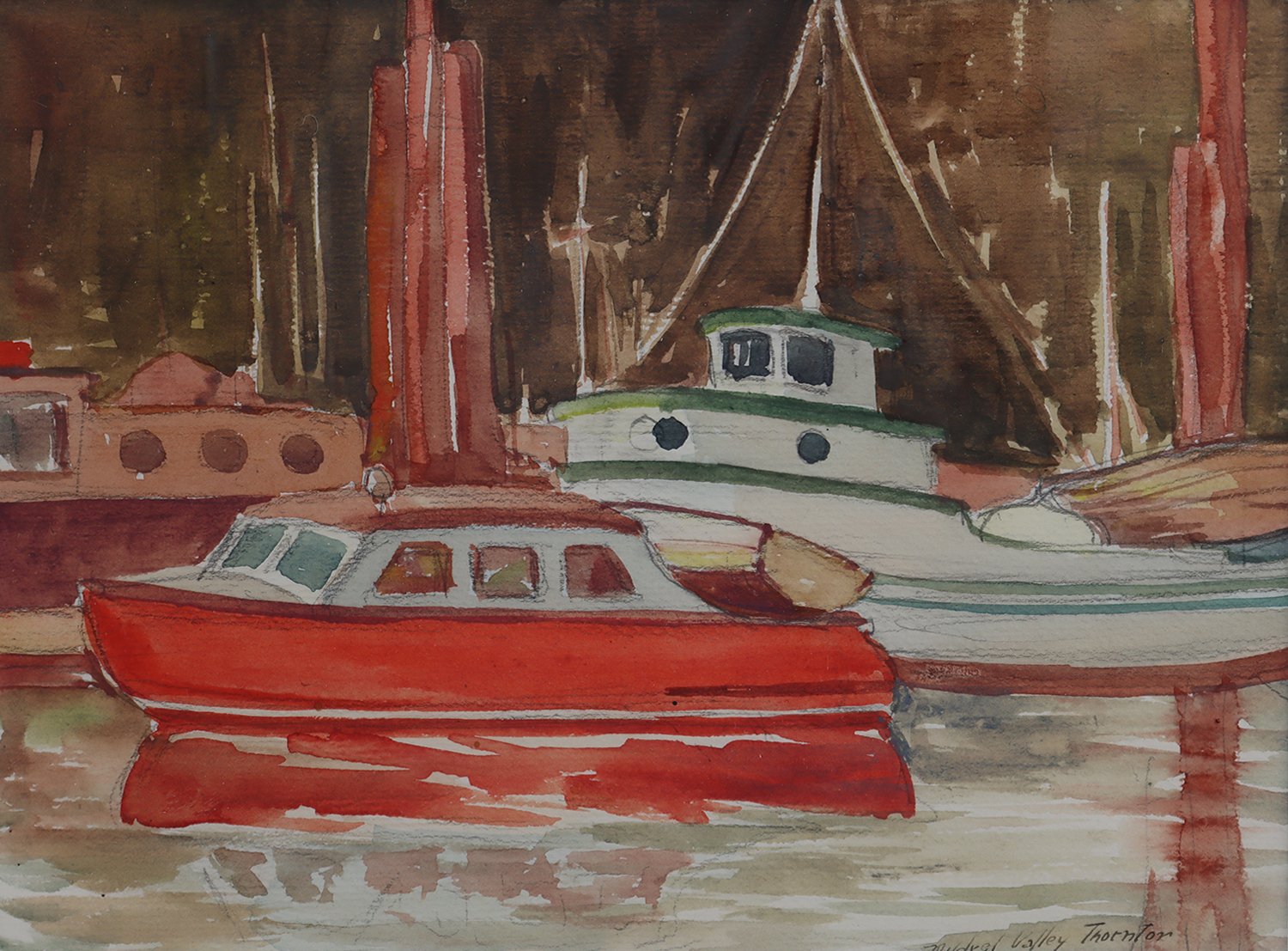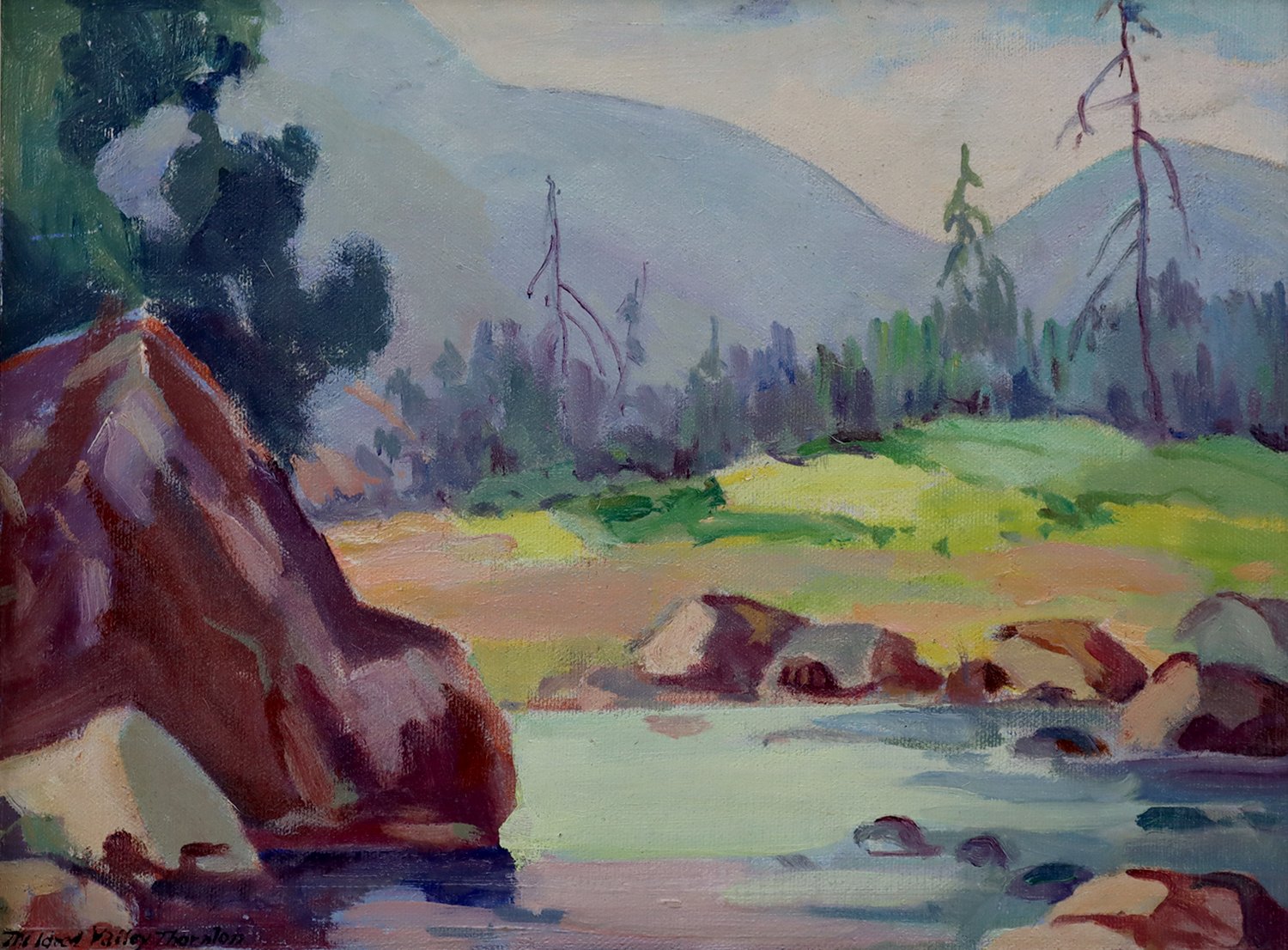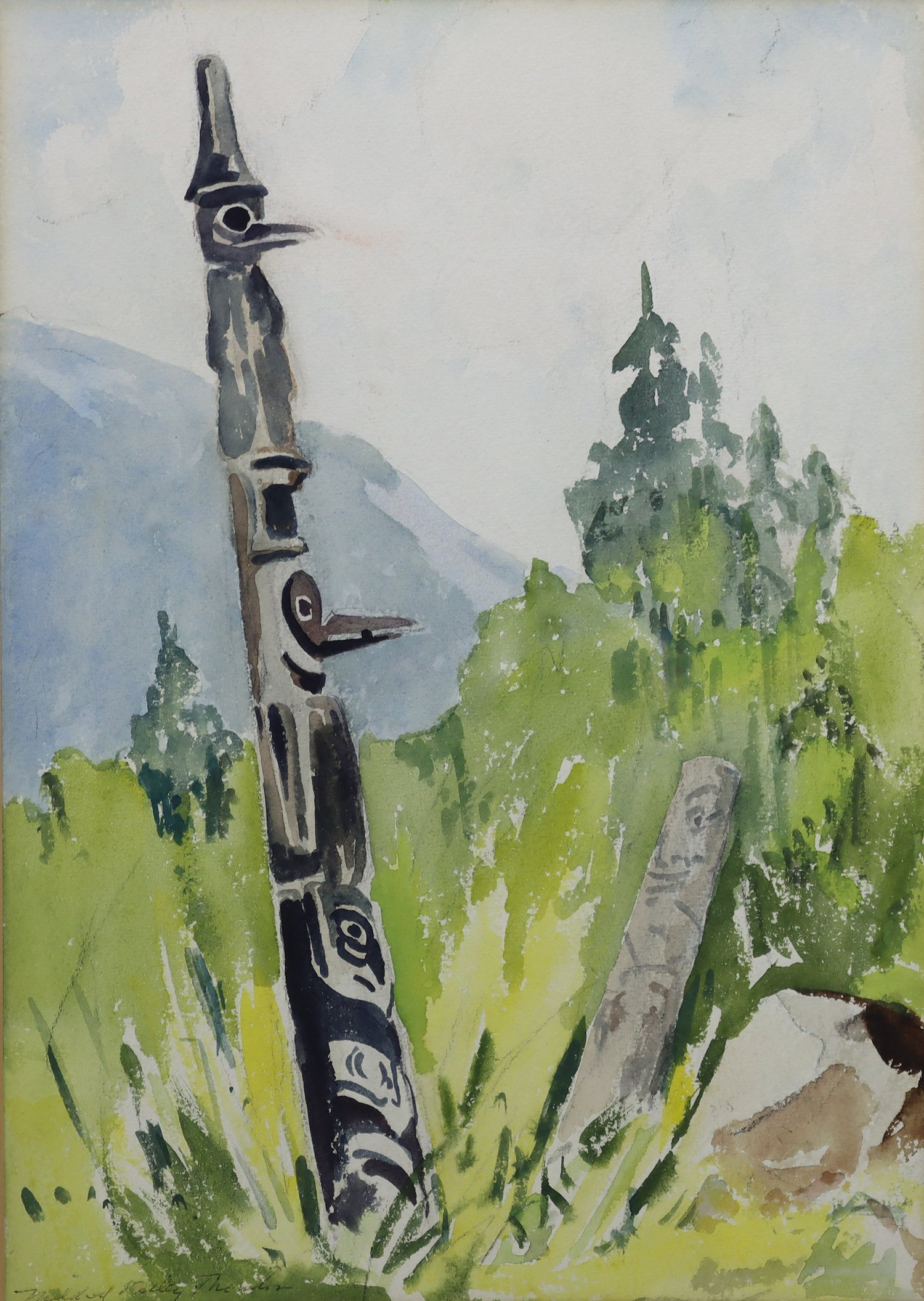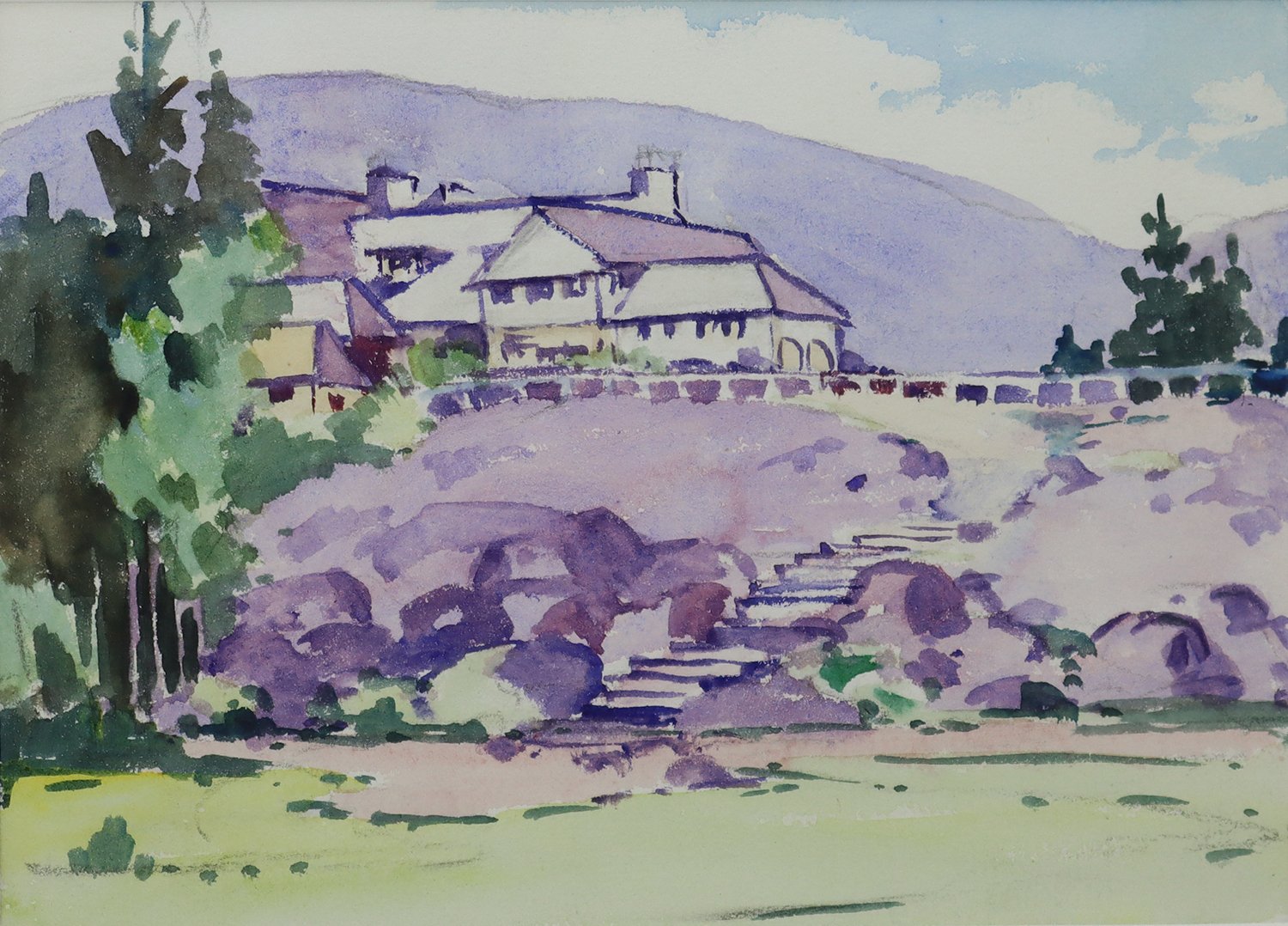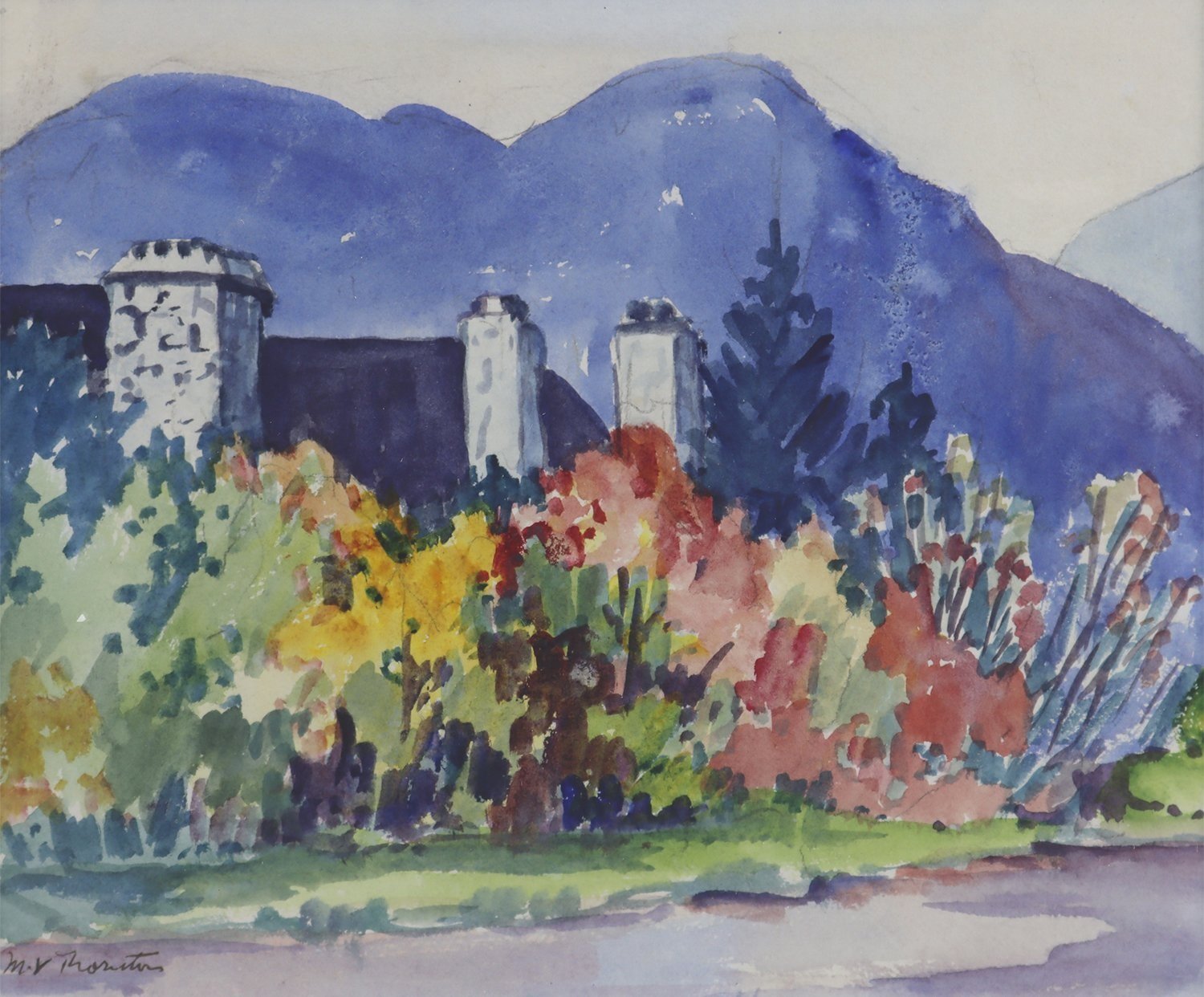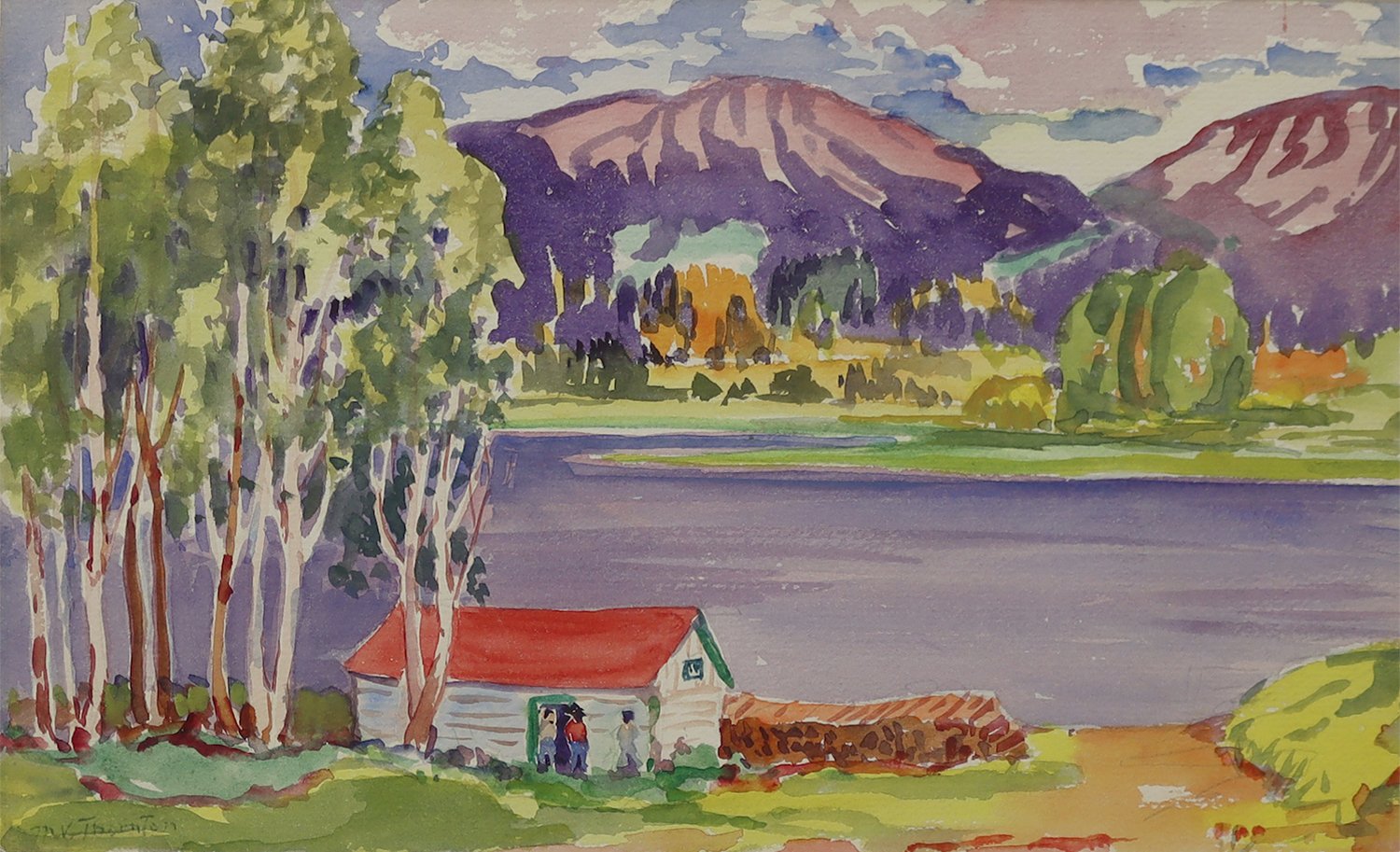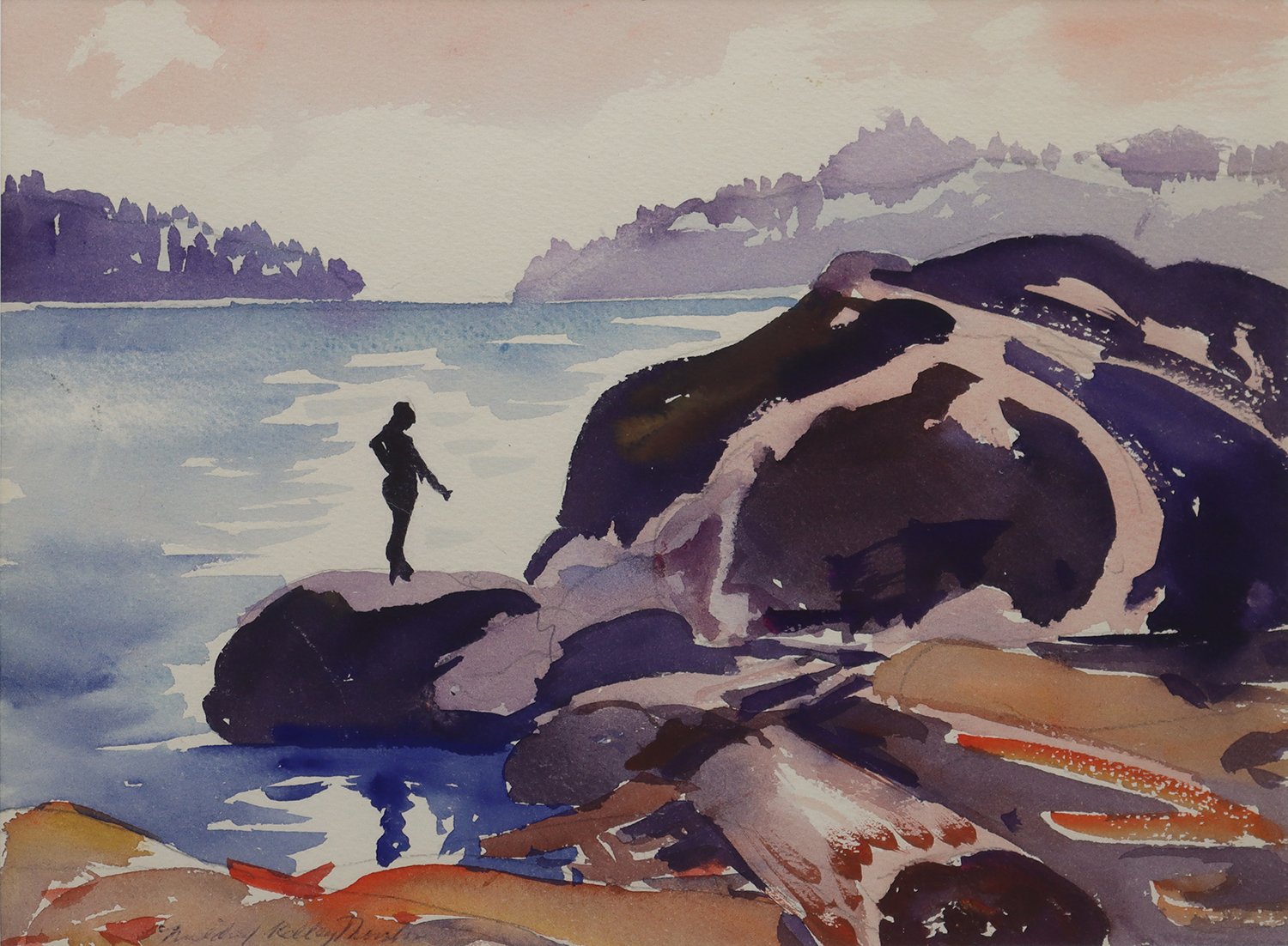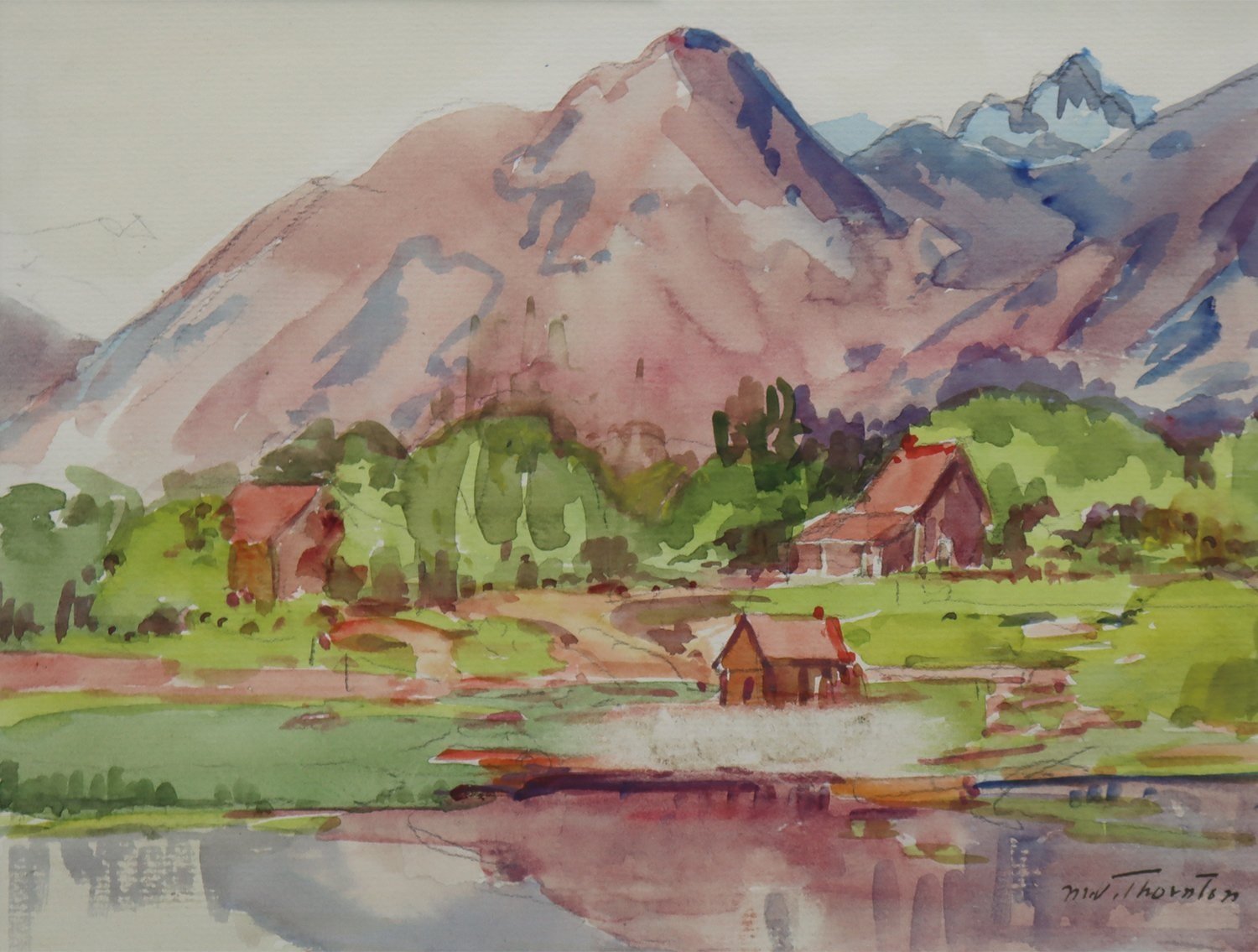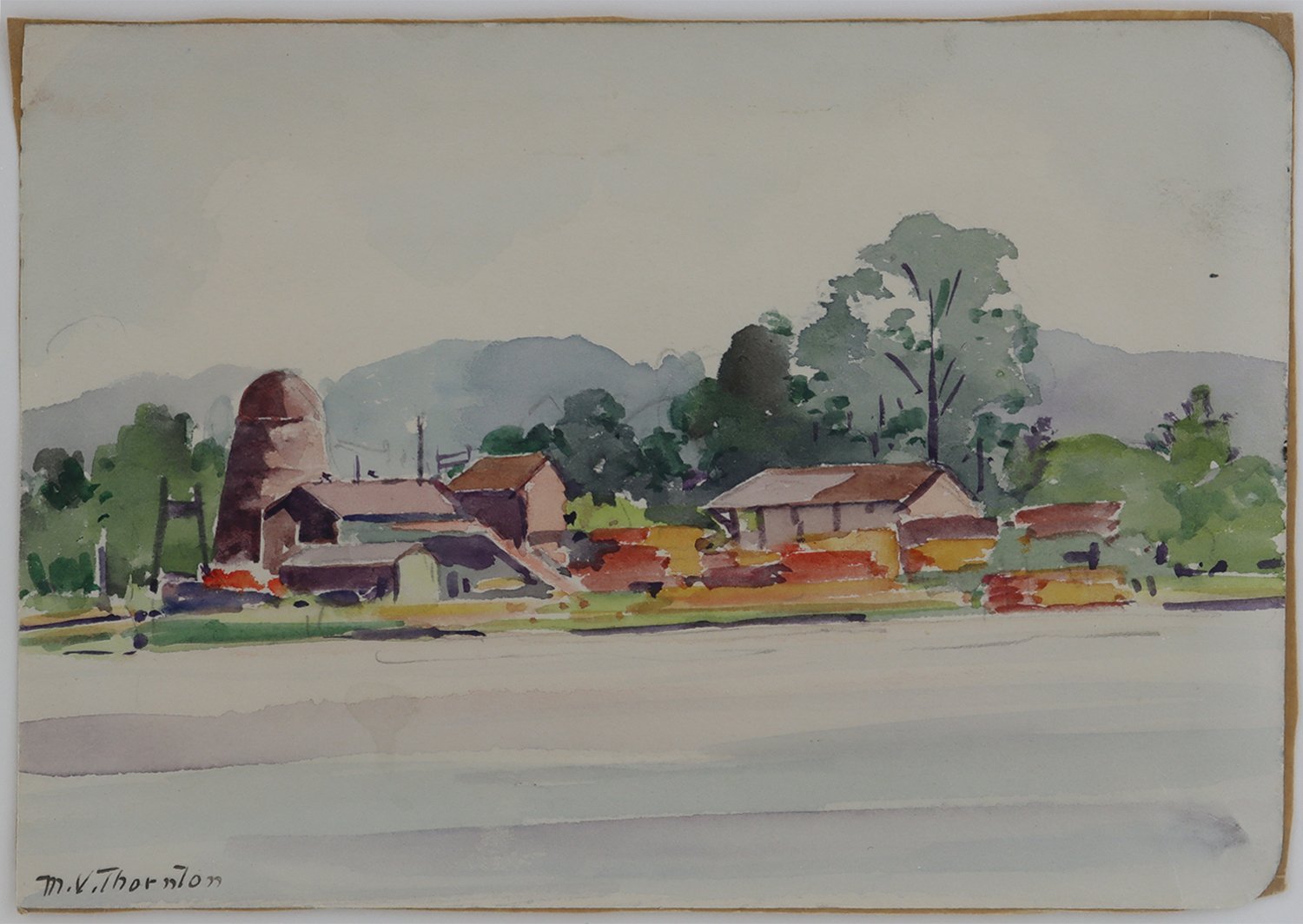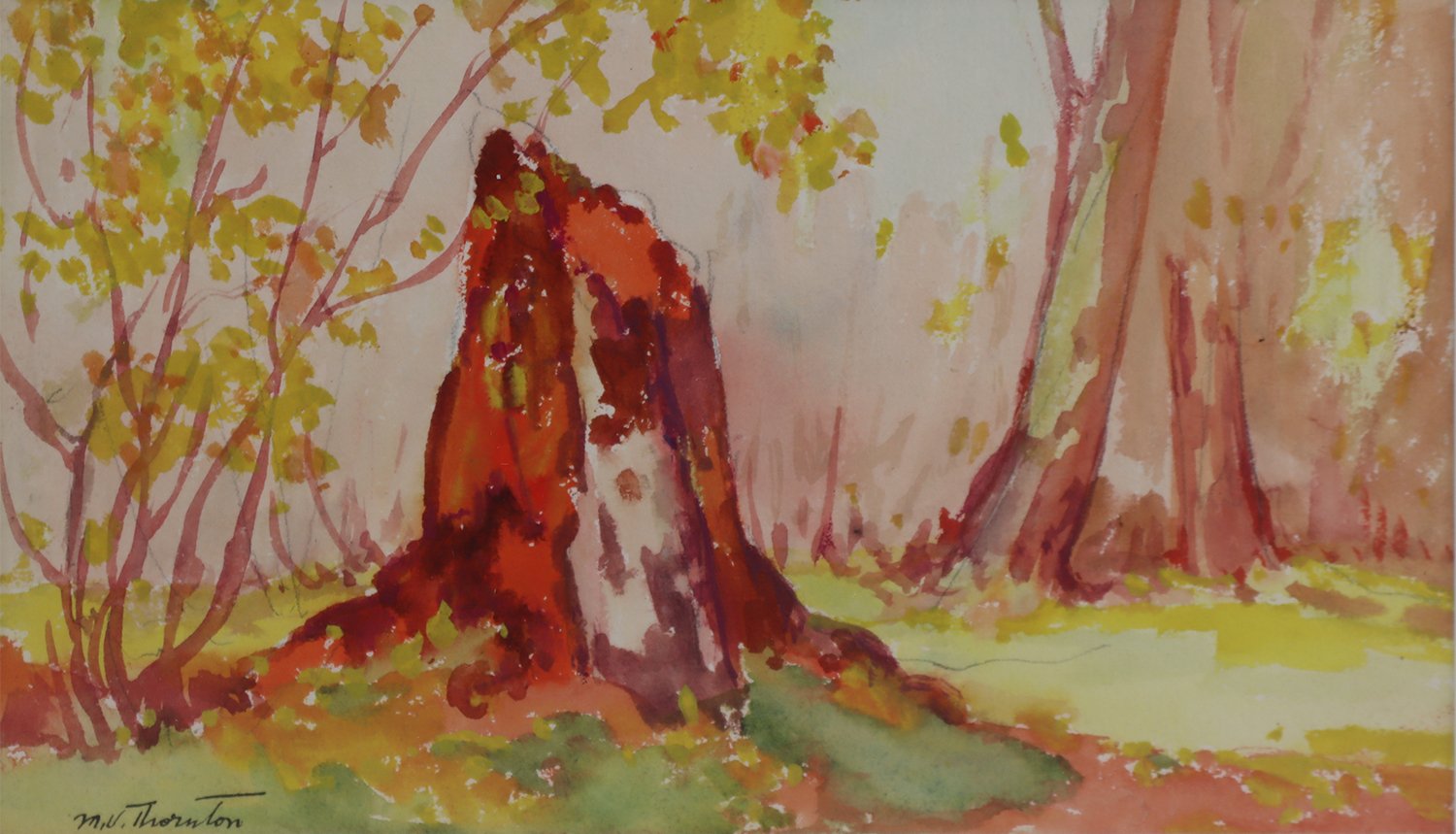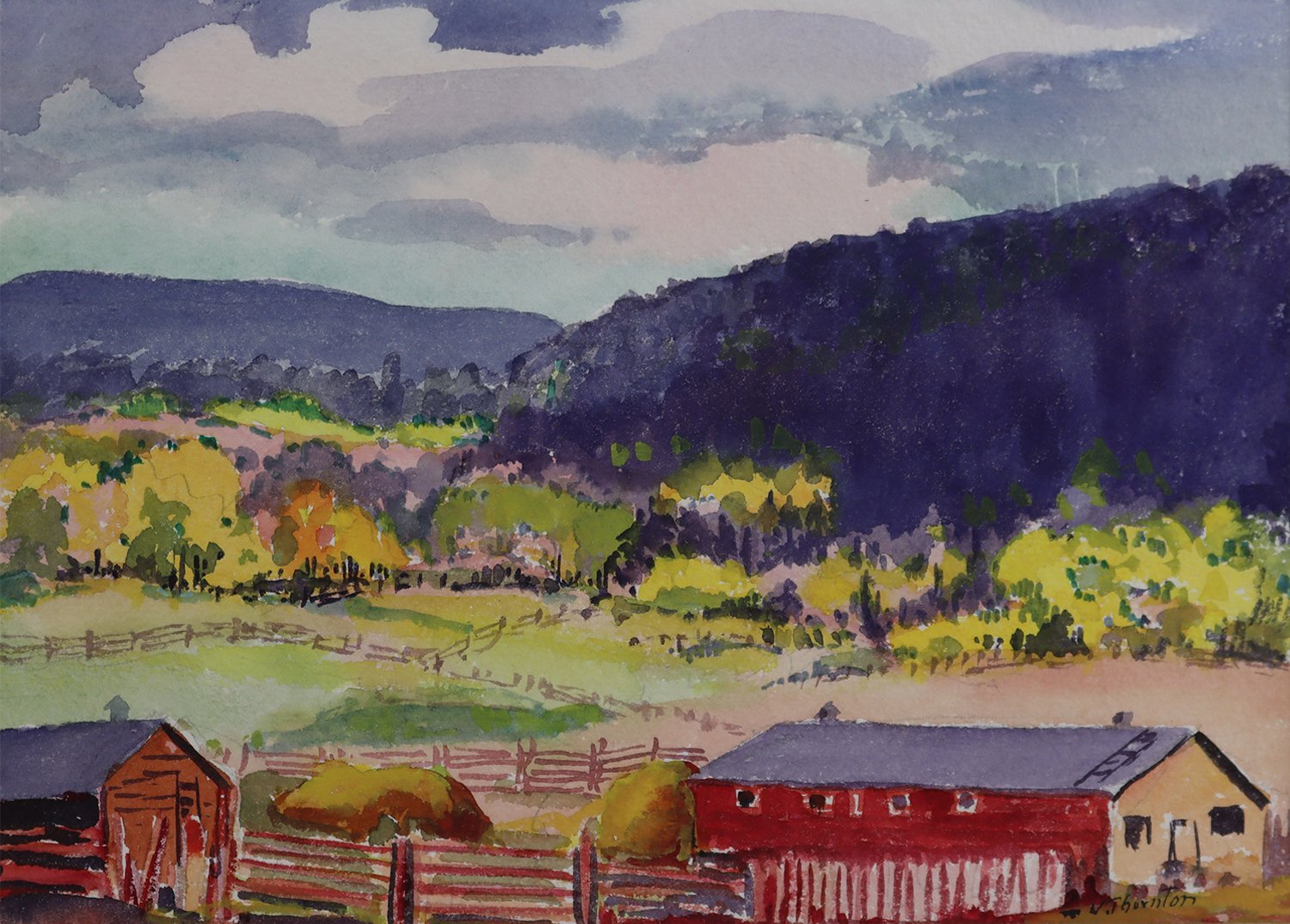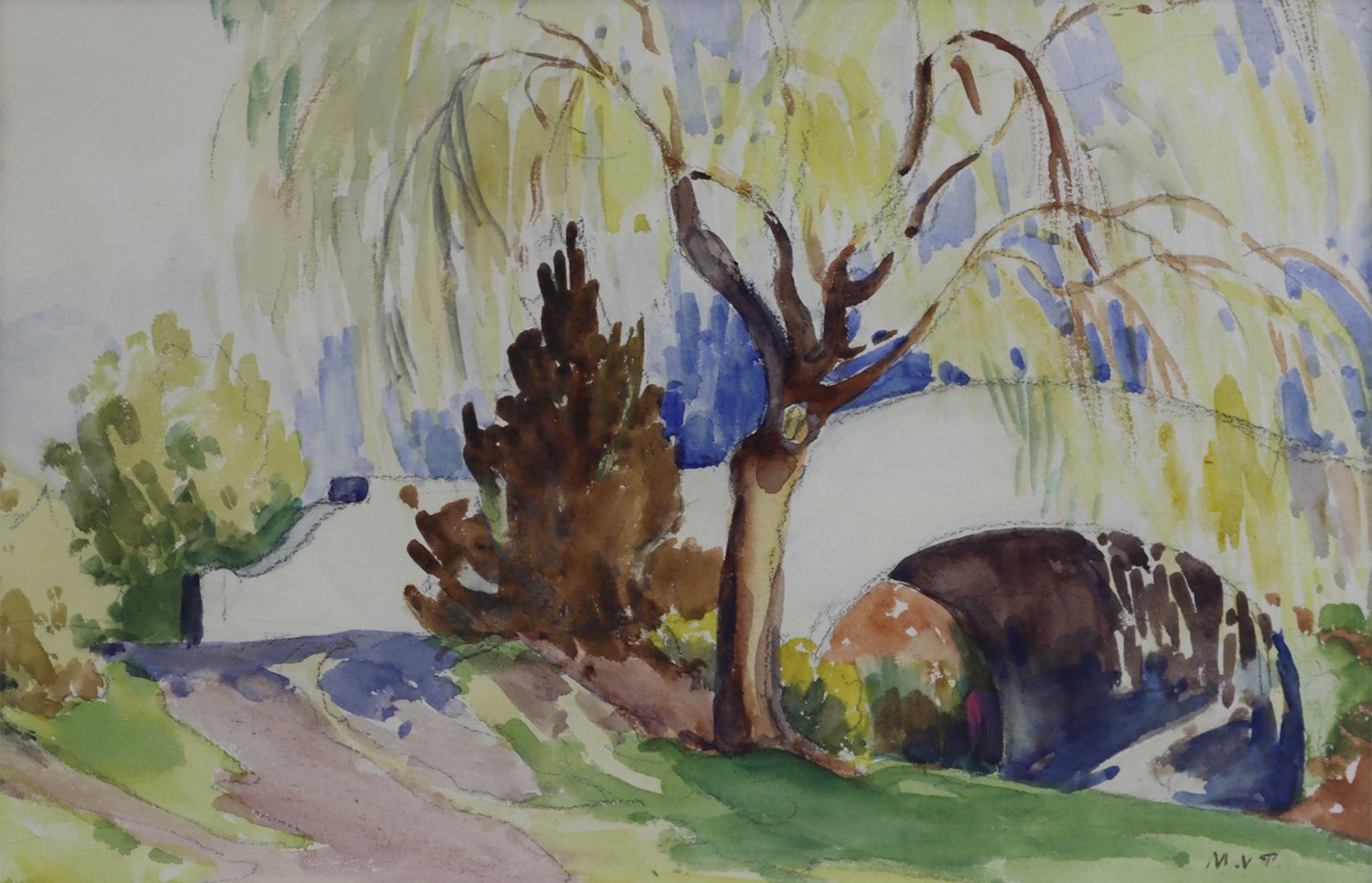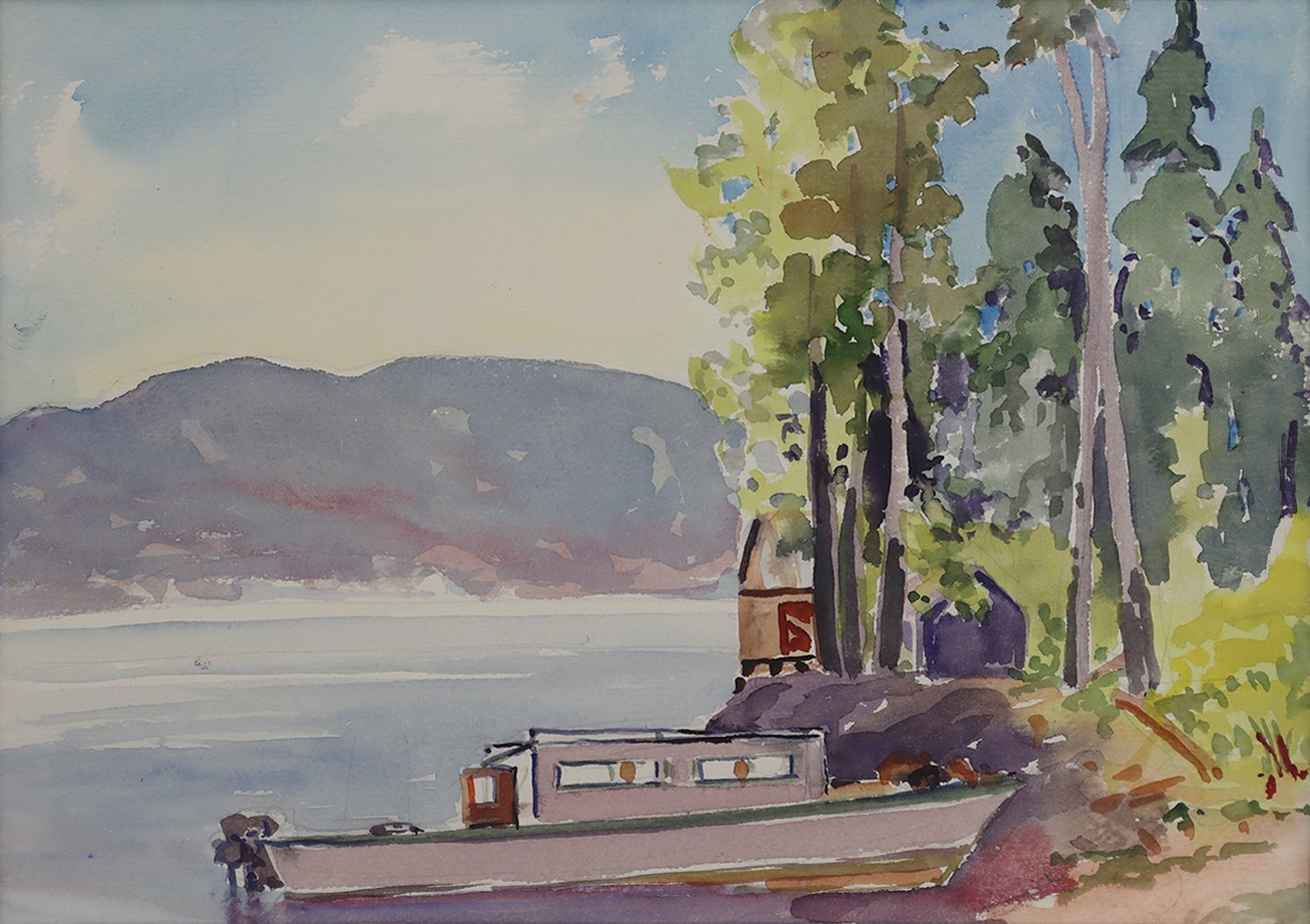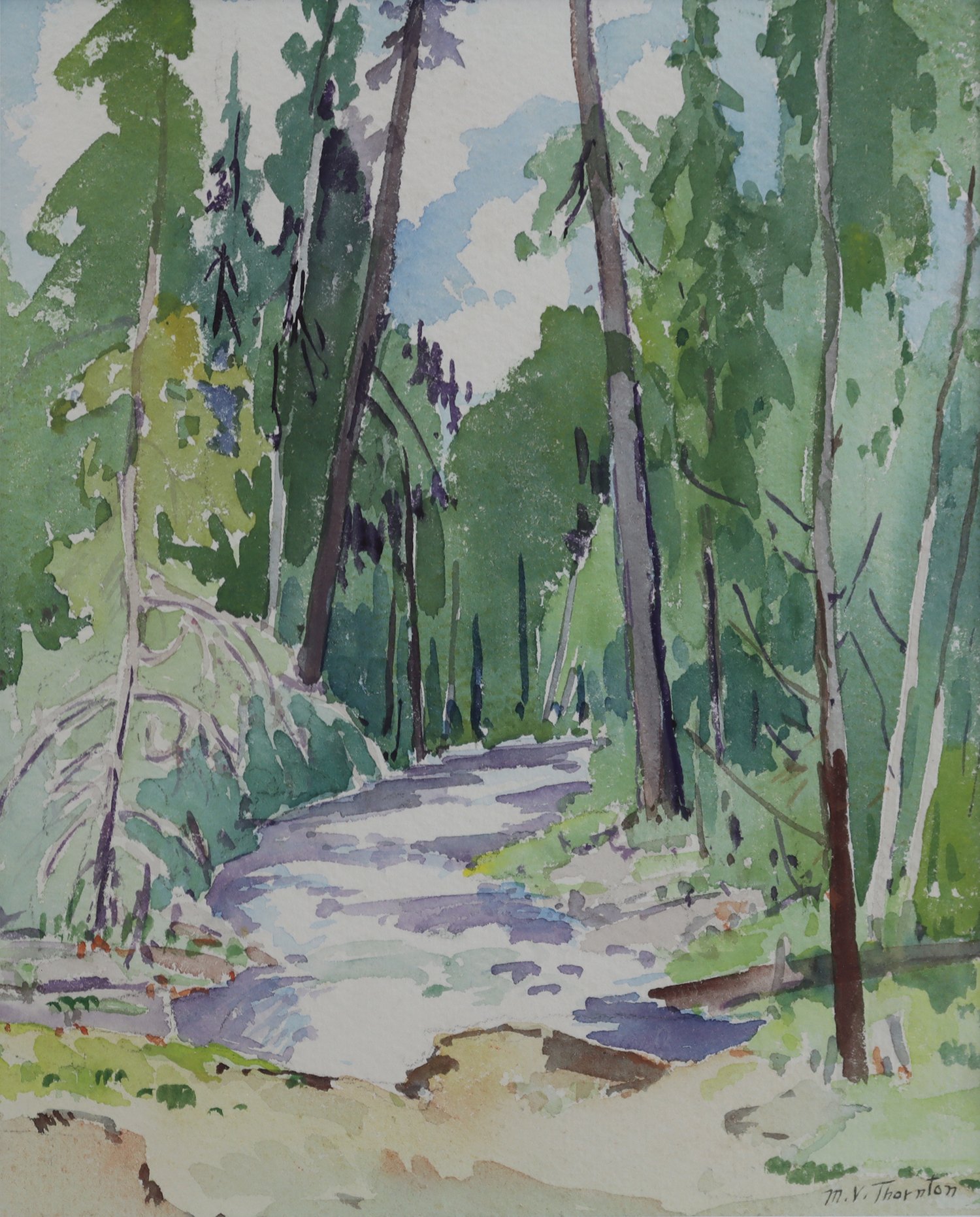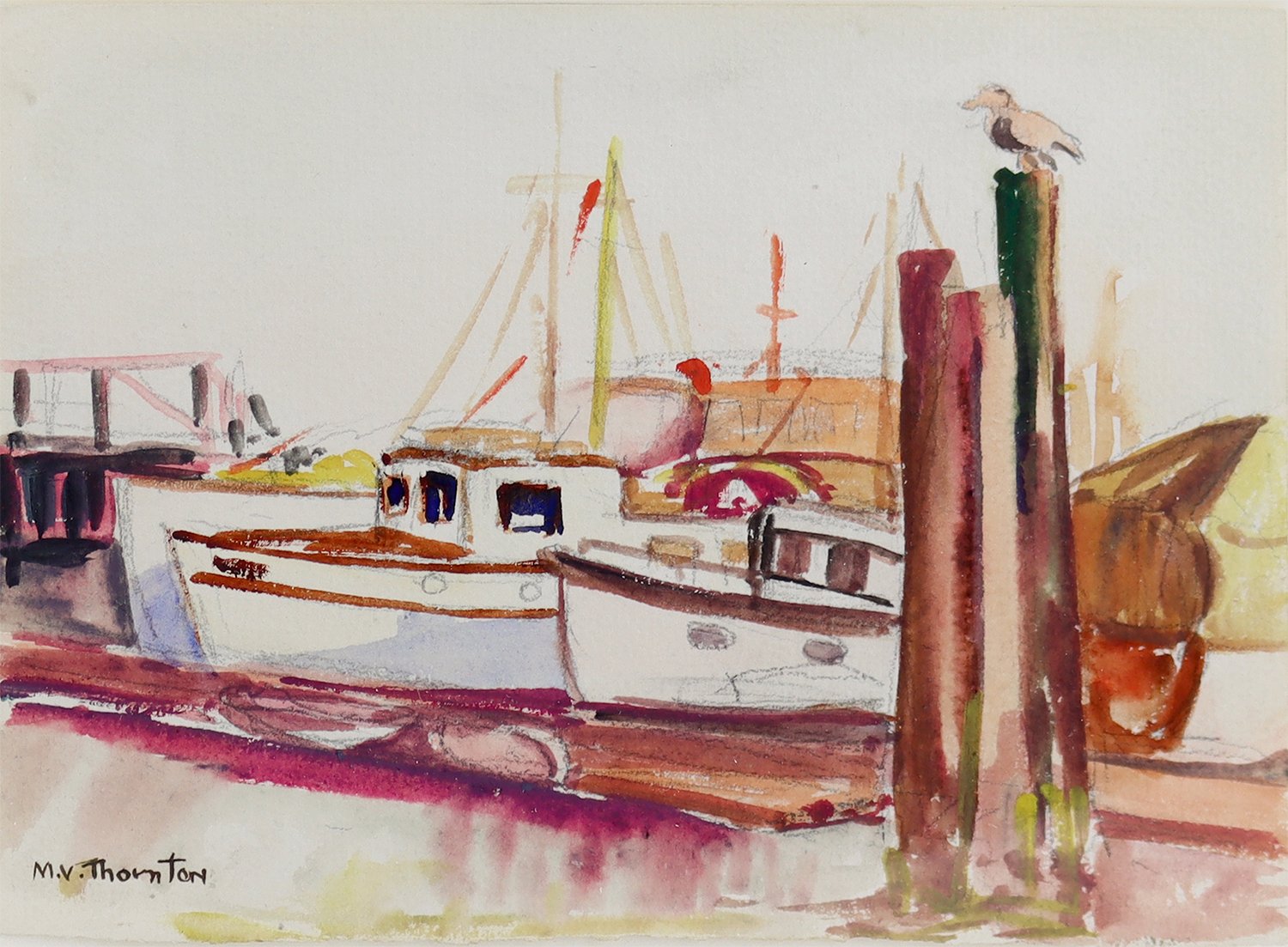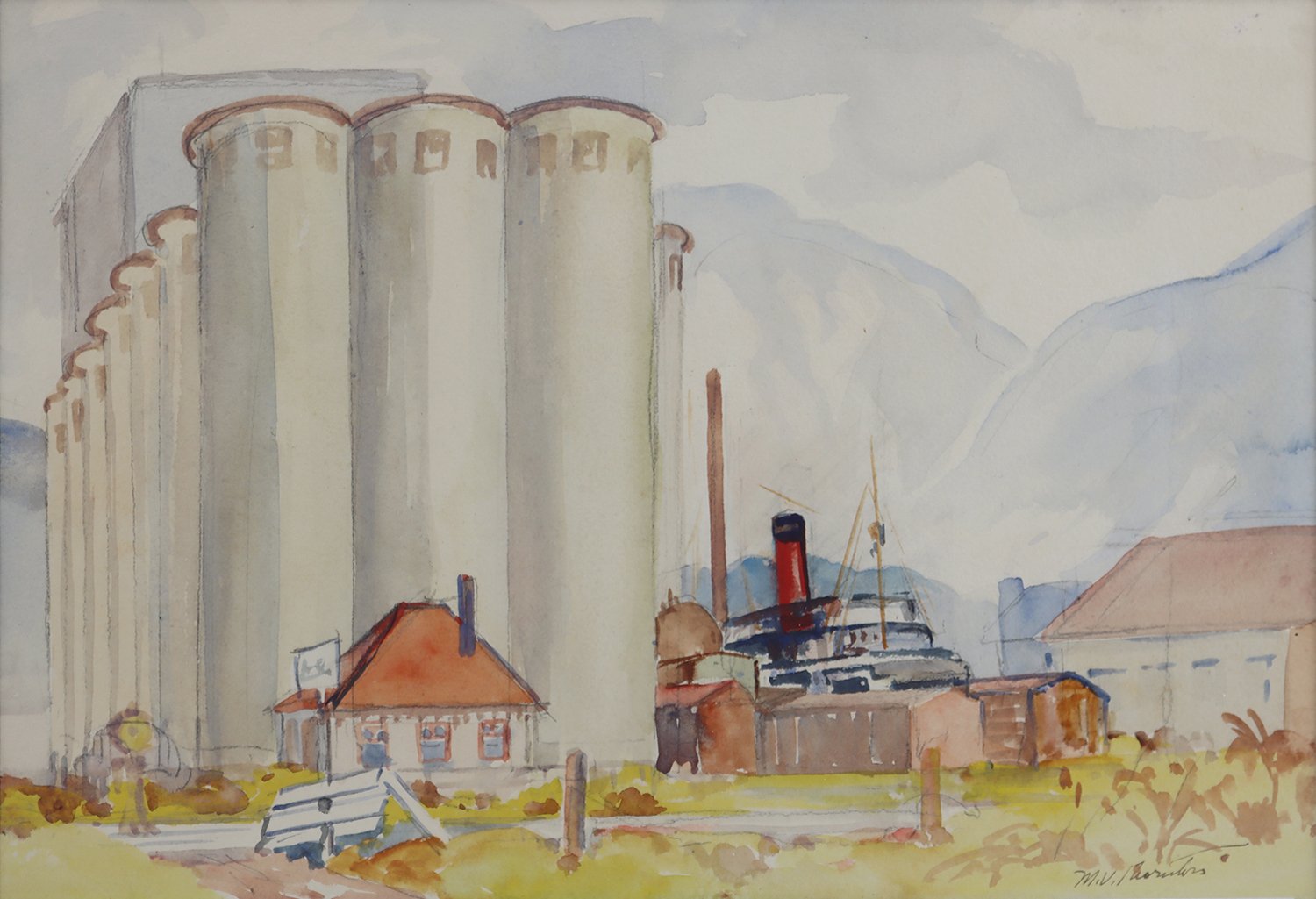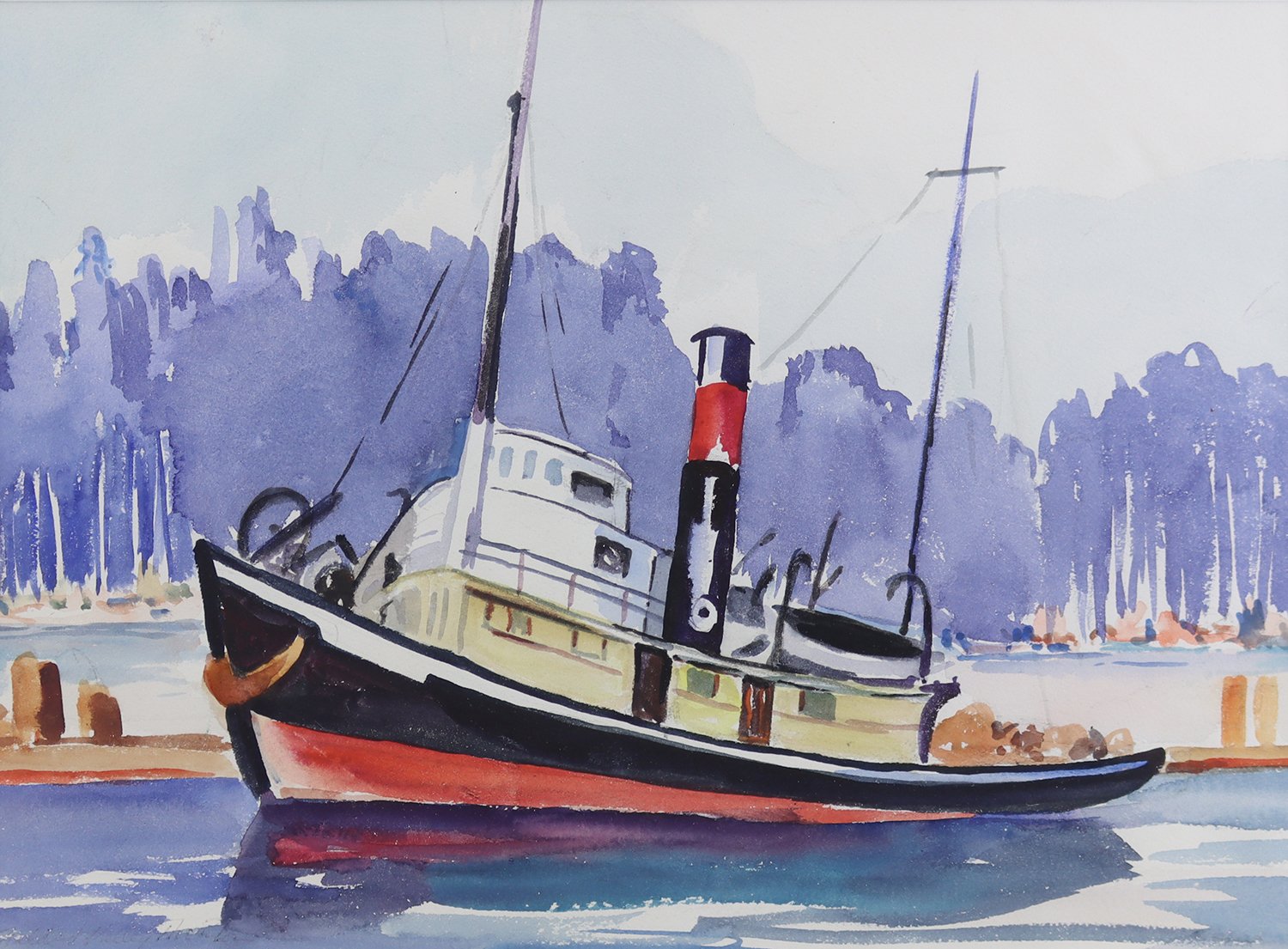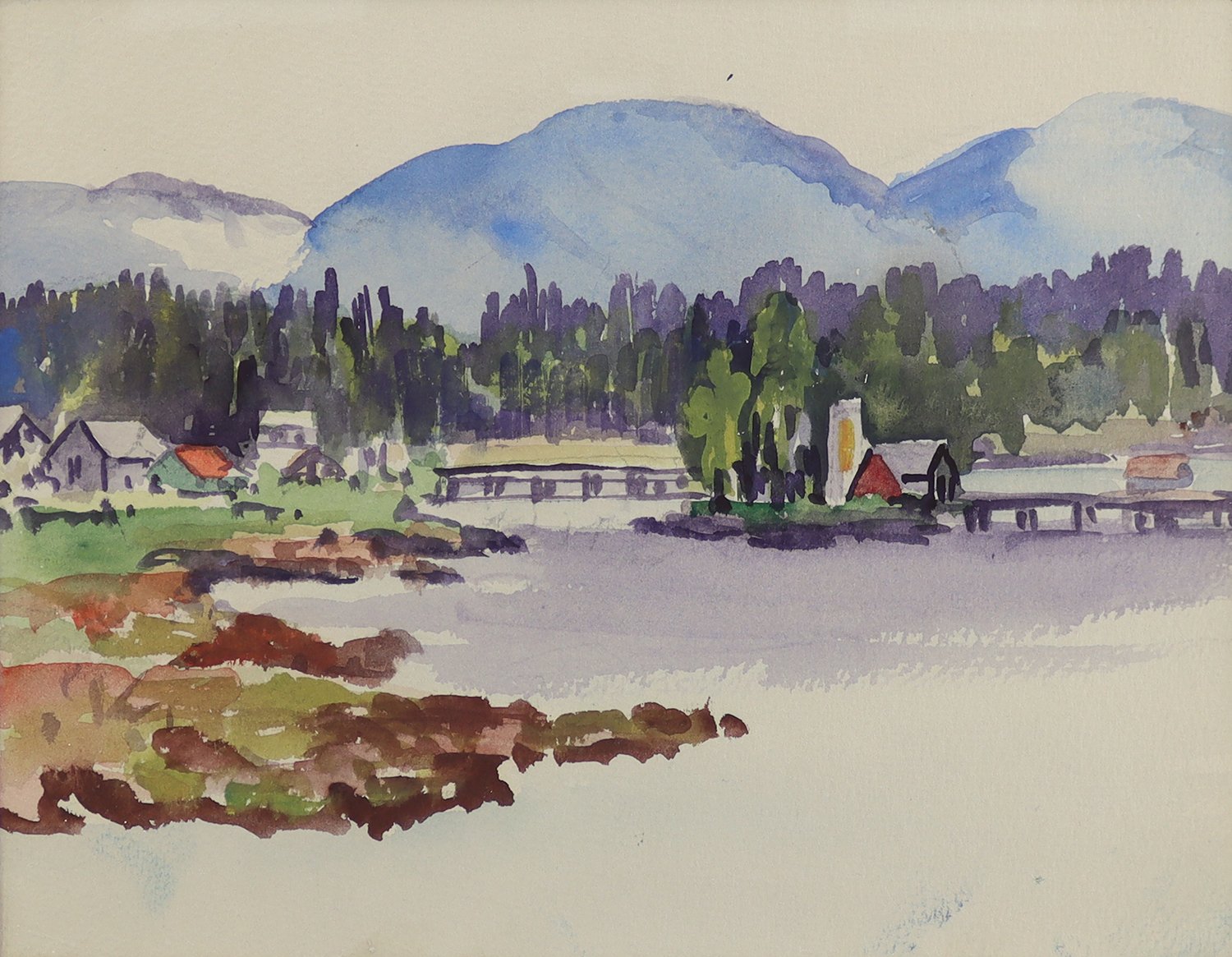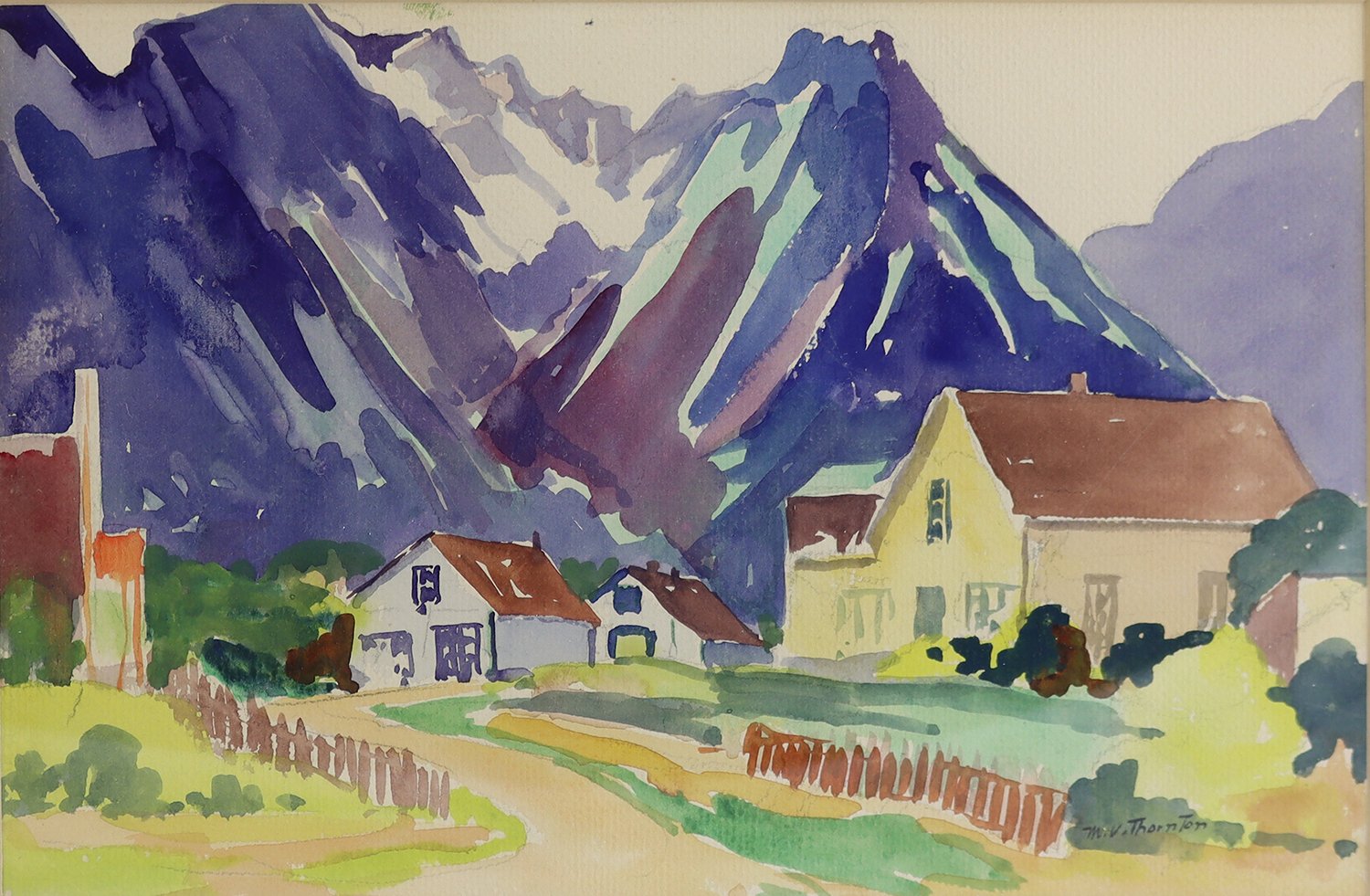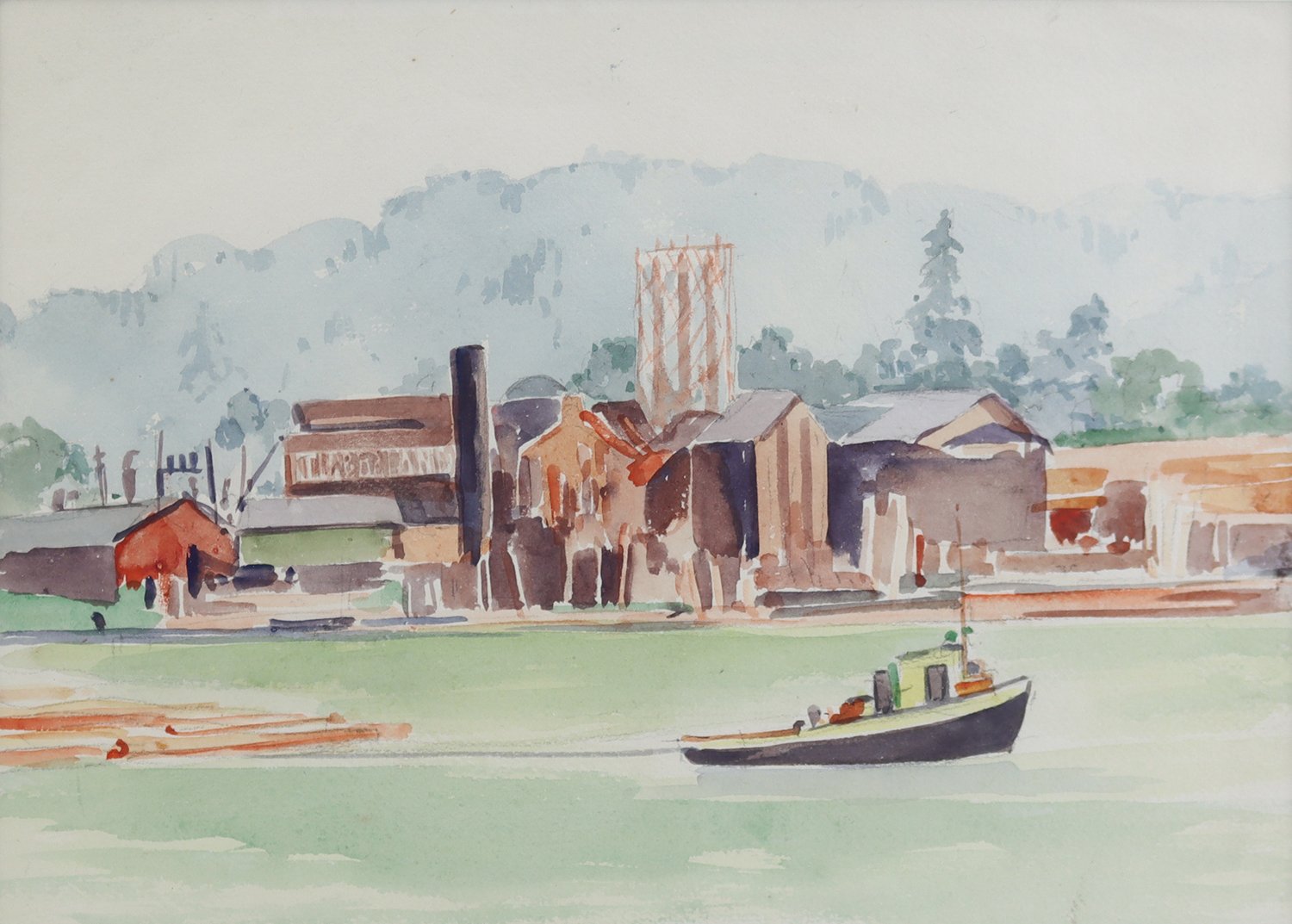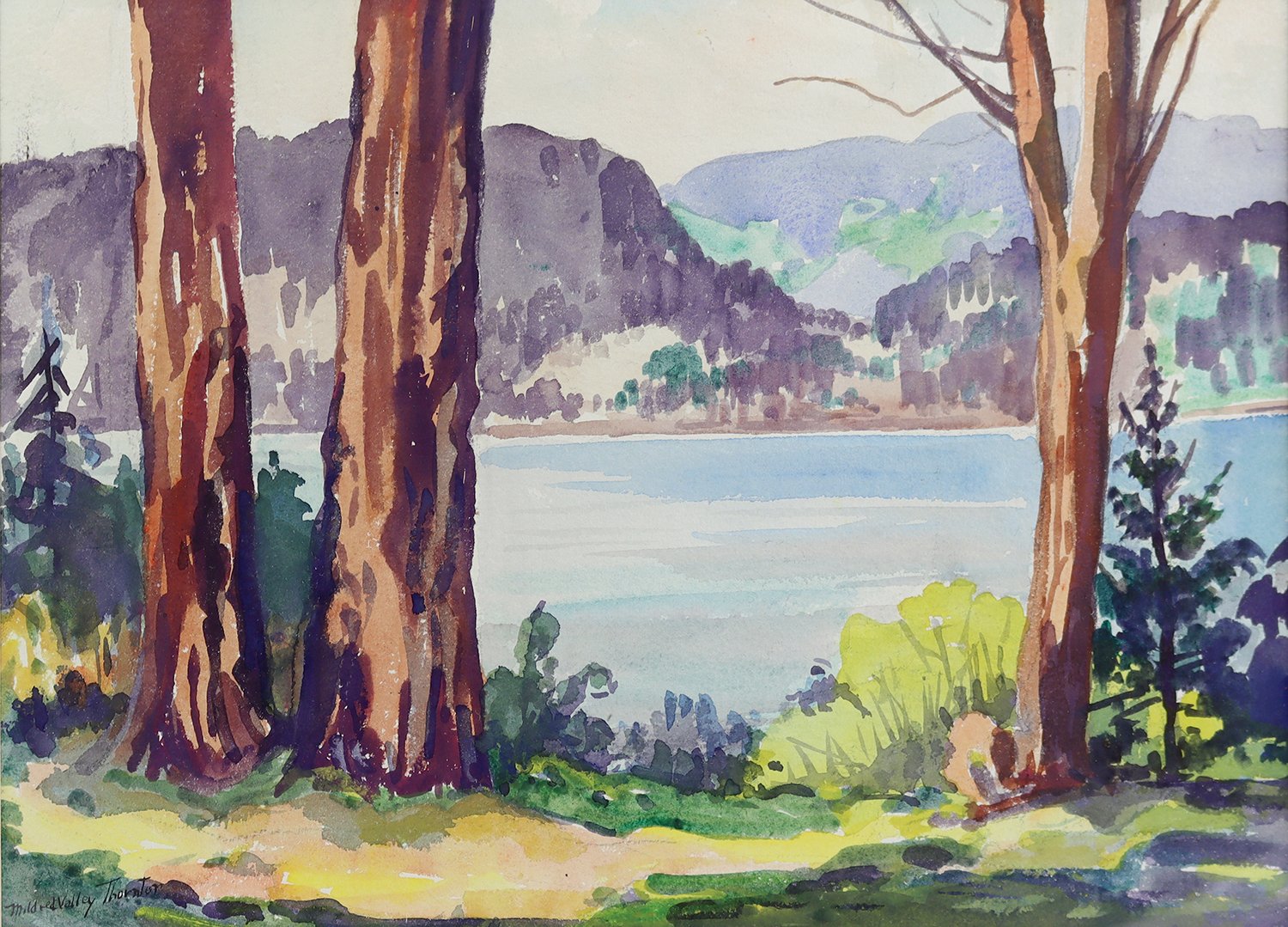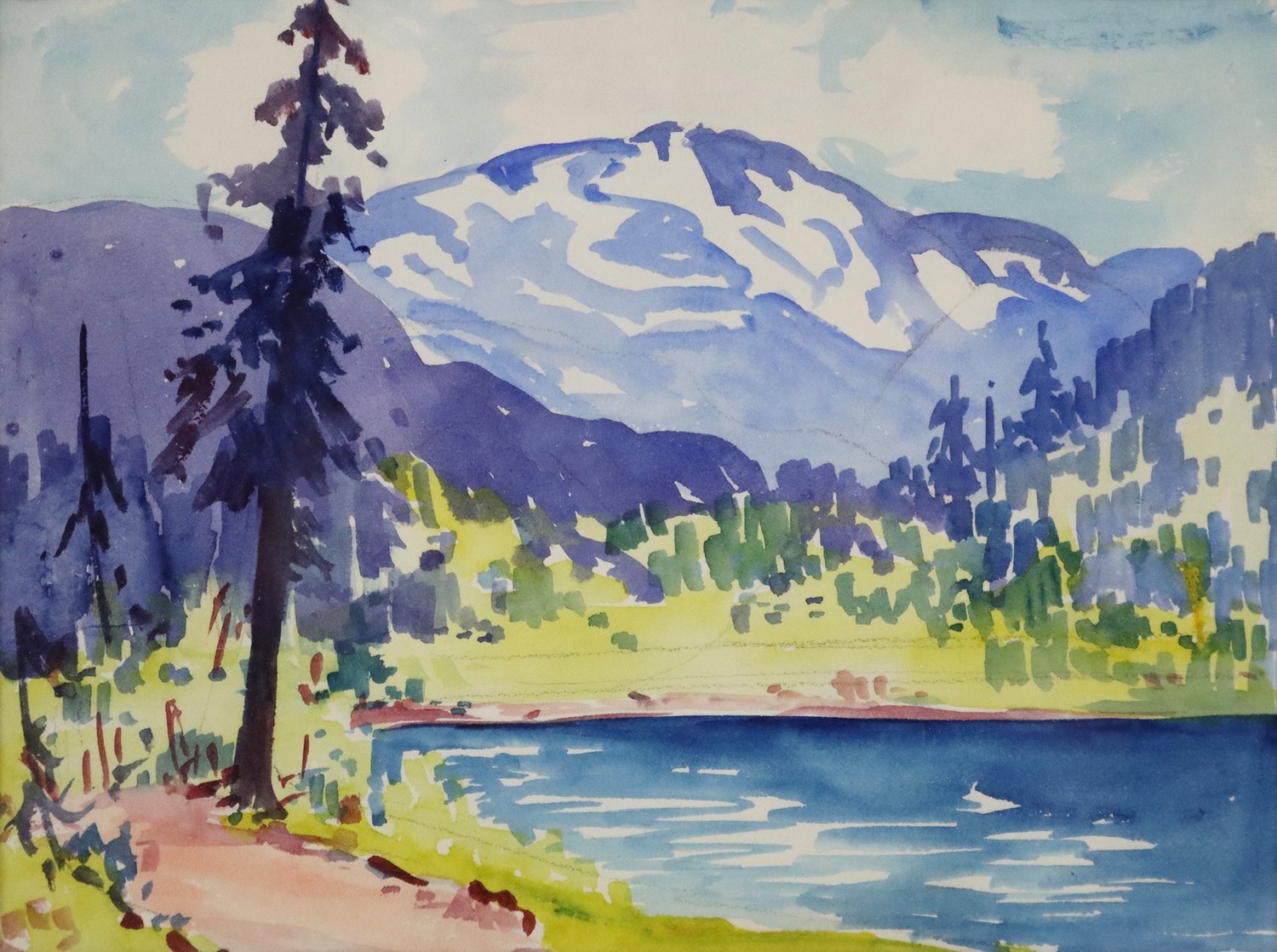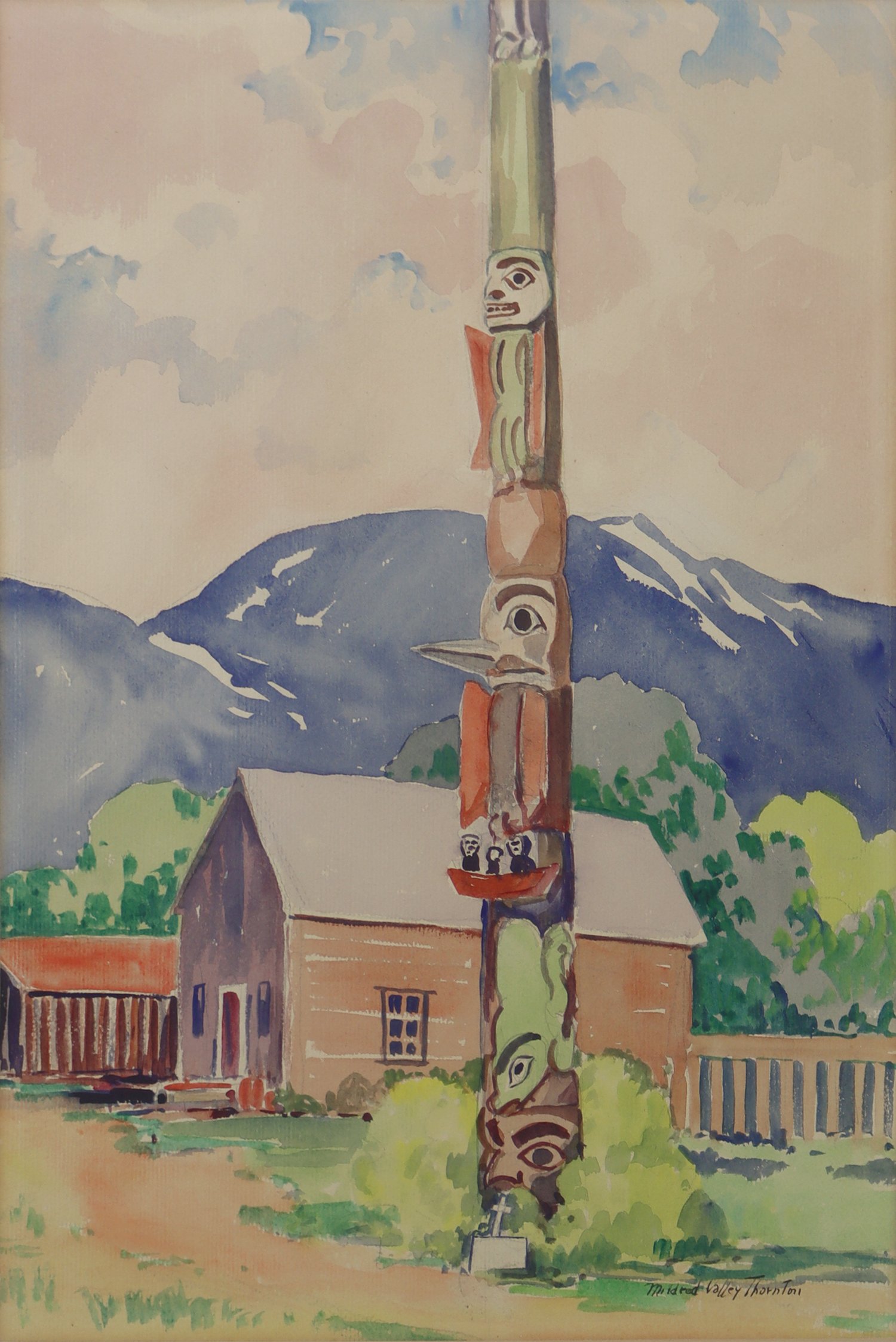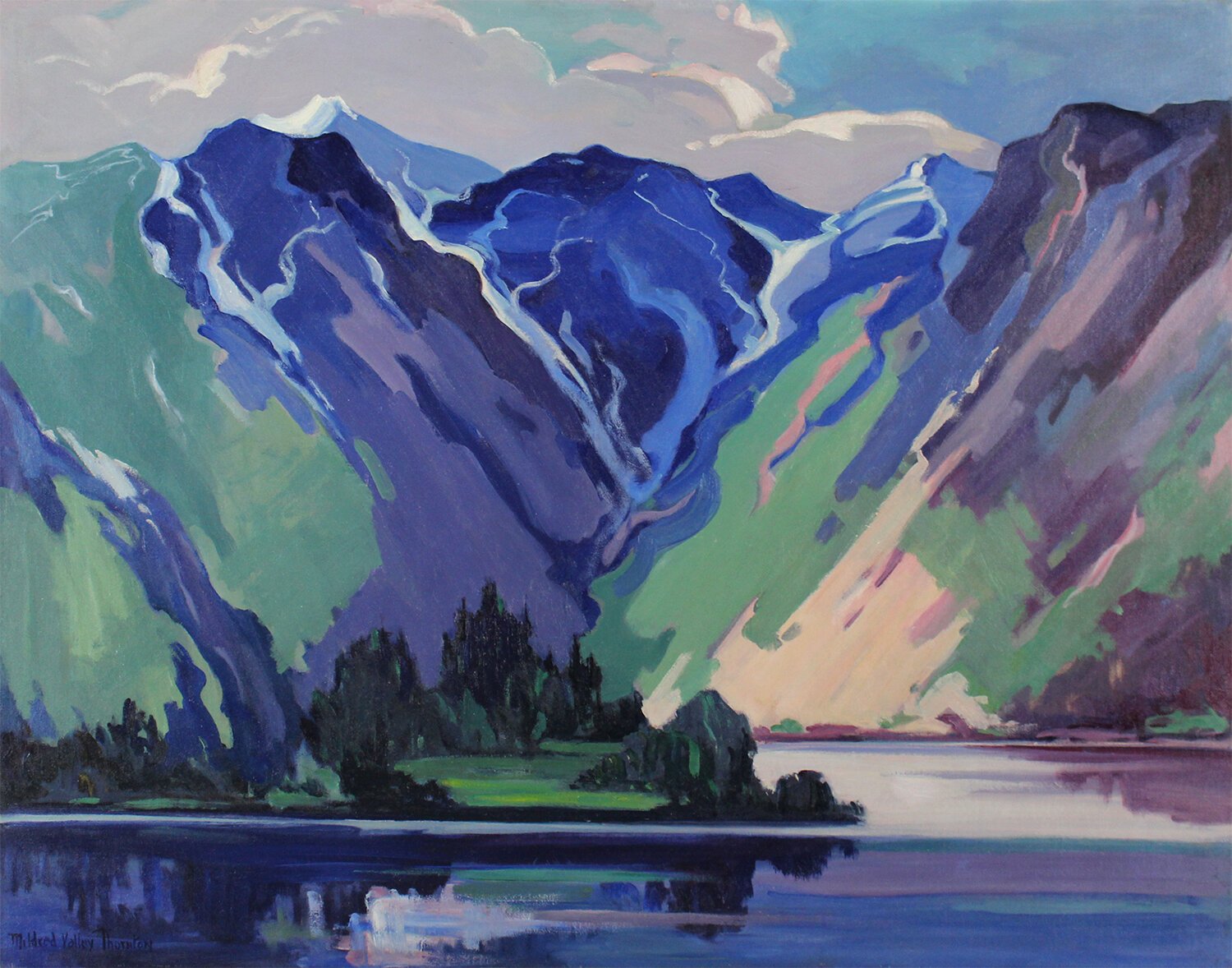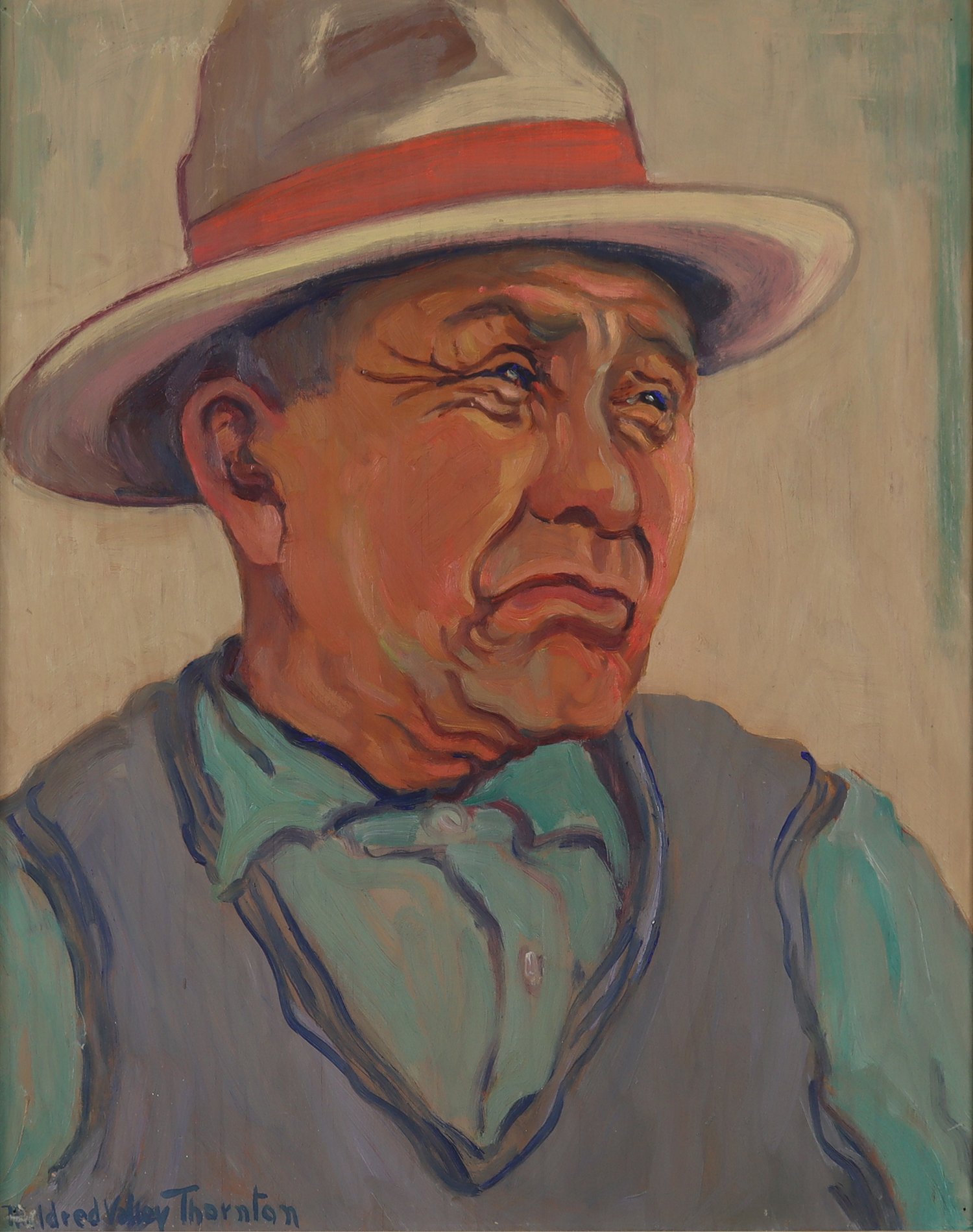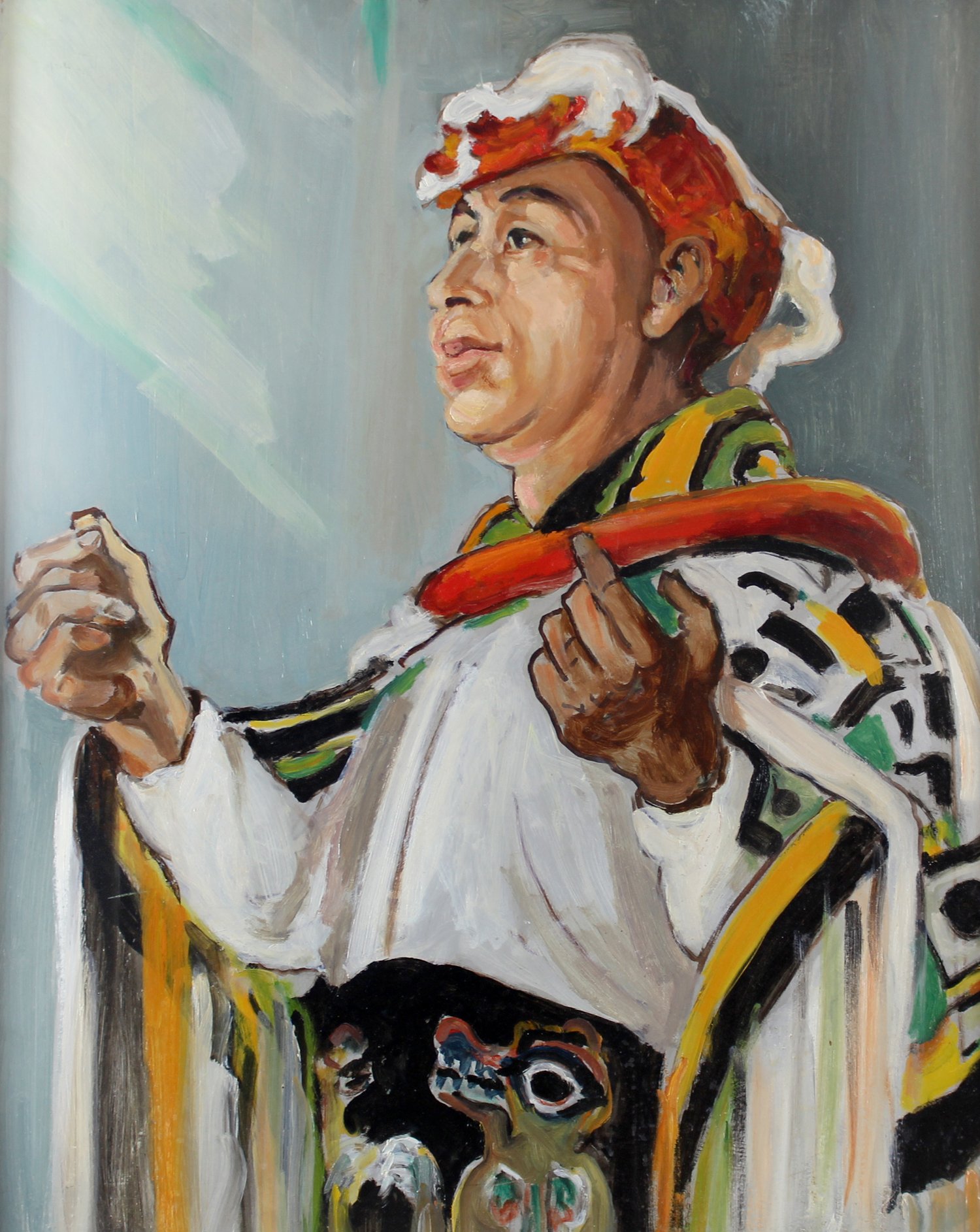MILDRED VALLEY THORNTON EXHIBITION
On view at 2117 Granville Street, Vancouver, BC
now until April 27, 2024
Uno Langmann Limited is pleased to present a collection of 32 works by Canadian artist Mildred Valley Thornton, hung alongside the Nuytten Northwest Coast Collection of entrepreneur and author Phil Nuytten (1941-2023). Collected by Nuytten over many years, the works represent a rare cross-section of the artist’s life and includes both watercolours and oils. Subjects range from indigenous portraits to landscapes and historical works documenting both indigenous communities and the Canadian landscape. Phil Nuytten, author of The Totem Carvers describing the life of Ellen Neel and her family, had an interest in Thornton’s work due to the connection between the two artists who had much in common. Both Thornton and Neel were passionate about advocating for women artists and preserving the traditional arts of the aboriginal people. Many works in the Exhibition are illustrated in The Life and Art of Mildred Valley Thornton, the comprehensive biography published in 2011 by Sheryl Salloum as part of The Unheralded Artists of BC series.
Famous for her portraits of the First Nations people of Saskatchewan, Alberta and British Columbia, Mildred Valley Thornton is also known for her landscapes, mythological and historical subjects in oil and watercolour. Thornton traveled extensively often to remote areas difficult to access in an attempt to capture on canvas the vanishing culture of the indigenous communities, documenting community life including potlatch, traditions, rituals, whaling, and handiwork. Her loosely worked and vibrant paintings of the B.C. outdoors and mountains showed her love of the Canadian landscape, first sketched in watercolour and often reworked in a larger format in oil or watercolour in her studio.
Born Mildred Valley Stinson in rural Ontario in 1890, she came from a cultured and educated family on her mother’s side. Following family tradition in 1907 at the age of seventeen Thornton began her early training at Olivet College in Michigan, graduating in 1910 from a three-year program with an art supervisor’s certificate. She briefly attended the Ontario College of Art in Toronto where she studied under George Agnew Reid and John William Beatty. She befriended Beatty, and through him was influenced by Tom Thomson who became her favourite artist.
Seeking adventure, Thornton moved to Regina in 1913 where she fell in love and married John Henry Thornton, a steadfast supporter of her artistic career, and the couple had twin sons. In 1918 she attended the Art Institute of Chicago to further her training, while John stayed in Regina, and by 1920 she was teaching at the Regina College of Art where she became head of the art department. It was in Regina that an earlier interest in the Indigenous peoples from her childhood was rekindled, and in 1928 Thornton began to paint First Nations subjects in earnest. Her portraits were usually painted in situ, often the only recorded likeness of her sitters, as well as landscape views, or mythological or historical paintings from stories told to her in these communities. She was actively involved in the art and culture communities of Saskatchewan, teaching painting and exhibiting widely.
Mildred and John Thornton relocated during the depression to Vancouver. This was an extremely productive time for her artistically, culturally and with social advocacy. She organized an exhibition at the Hudson’s Bay in 1935, followed by a solo exhibition at the Vancouver Art gallery in 1936 with 88 works. Thornton exhibited at the B.C. Provincial Museum in 1942 and regularly in the Annual B.C. Artists and B.C. Society of Fine Arts exhibitions, often beside such artists such as B.C. Binning, Emily Carr, Lawren Harris, and W.P. Weston. As a journalist she was an art critic for the Vancouver Sun from 1944 to 1959, reviewed books and contributed to the first aboriginal newspaper The Native Voice. She continued to paint the First Nations community and through the Totem-Land Society befriended artist Ellen Neel. The two developed a strong friendship and had much in common, both passionate about advocating for women artists and preserving the traditional arts of the aboriginal people. Thornton frequented the Neel family Totem Art Studios shop in Stanley Park and became a supporter of Ellen’s work, purchasing many of her carvings. When Ellen died in 1967 Thornton wrote a touching tribute, and her portrait of Mungo Martin, Ellen Neel’s uncle, is held in the McMichael Collection in Kleinburg, Ontario.
After her husband’s death Thornton moved to London to be closer to her son, where she exhibited, lectured and was honoured with a Fellowship to the Royal Society of Arts, returning to Vancouver in 1961. Indian Lives and Legends, Thornton’s account of her experiences painting the First Nations of B.C., was published in 1966 the year before she died. Throughout her career, she was honoured and had many titles bestowed on her by indigenous tribes, exhibited widely, and became a member of numerous art associations. Her second book Buffalo People: Portraits of a Vanishing Nation was published posthumously in 2000, and in 2011 Sheryl Salloum published a comprehensive biography The Life and Art of Mildred Valley Thornton as part of The Unheralded Artists of B.C. Series.
Landscapes and Portraits by Mildred Valley Thornton Exhibition November 1985 - January 1986
Thornton’s large collection of artifacts was purchased by the B.C. Provincial Government, and her sound recordings by the B.C. Archives. After her death, Thornton’s physician Dr. Laurie Patrick and his business partner, Uno Langmann, were the first to handle the estate of her paintings, and purchased seven portraits illustrated in Indian Lives and Legends. They felt strongly that her paintings should be preserved, and Uno Langmann included her work in his 1978 exhibition Early Canadian Watercolours. He still owns the portrait which he feels was her best, Siyamlut (Siamelaht, “Aunt Polly”). He describes his admiration for her work:
She had a very, very loose hand. To make a painting with a wide brush, you have to be very sure where you put your brush; very few people can do that. Mildred was much like Emily Carr in her self-assuredness. Mildred managed to capture the ultimate feeling that she saw in her sitters – their souls…What Mildred, got, which was very good, was the soul of the person. She didn’t necessarily get every wrinkle, but she got the soul. And that’s really the most important part.
and
At the time, nobody painted the volume of portraits that Mildred did, and nobody painted portraits better than Mildred did, including Emily Carr. What strikes me about Mildred’s work is its power. I didn’t know the sitters, but can feel Mildred’s desire to demonstrate the character and history of the people she depicted. She used strong colours because she wanted to emphasize the strength of the aboriginal people. She used her ability to convey the spirits of her sitters…Mildred made a big statement…I would love to have met her.
On her painting in general:
Many of the early female painters used very light, pastel colours: Statira Frame, Mary Ritter Hamilton, Sophie Pemberton – they used a lot of pink and mauves. Mildred, and Emily Carr, turned to stronger colours. I think Mildred’s landscapes helped her to develop a strength in her palette. She used pure colour, almost straight from the tube, and she was one of the first female Canadian painters to do so.
and
There are very few people who can paint in watercolours and oils. There are very few people who can span landscape and go into portraiture… Her work is full of life. She has a wonderful palette, which you do not see with many other painters. There is cheerfulness to her work and immediacy in her paintings.
In an excerpt from Thornton’s biography, Sheryl Salloum describes the Mildred Valley Thornton paintings in the Nuytten Collection:
From her earliest exhibitions, collectors have responded to Mildred’s work. One family has twenty-three Thornton watercolours hanging on a bedroom wall (and six more elsewhere in the house). The husband bought the first one and, over the years, has continued to surprise his wife on her birthdays, anniversaries or other special occasions with Thornton paintings. She says her husband ‘feels very lucky to find any of Mildred’s watercolours…My husband and daughter each have one of Mildred’s oil paintings, but I prefer her watercolours.” Most are small and have been hung in groupings: boat studies, Fraser River scenes, Stanley Park, totem poles, historic studies like old sawmills and Vancouver landscapes: the couple like to view the work upon waking:
You look at them, and ten minutes later you see something you didn’t see the first time. It is also fun to wonder, Where was Mildred when she painted this? One painting is of the Benson Shipyards in Vancouver. We used to go and fish shiners off those docks, years ago…You don’t see that anymore…You have to give Mildred credit for doing what she did in those days. It was pretty tremendous.


